Having experienced our first frost throughout much of the lower Susquehanna valley last night, we can look forward to seeing some changes in animal behavior and distribution in the days and weeks to come. Here are a few examples…
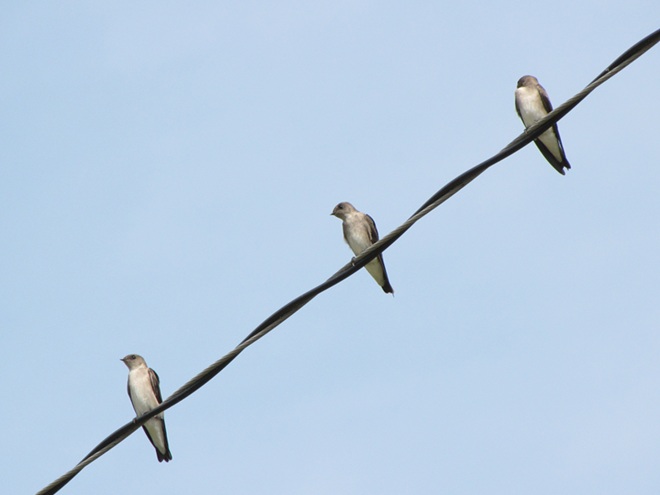
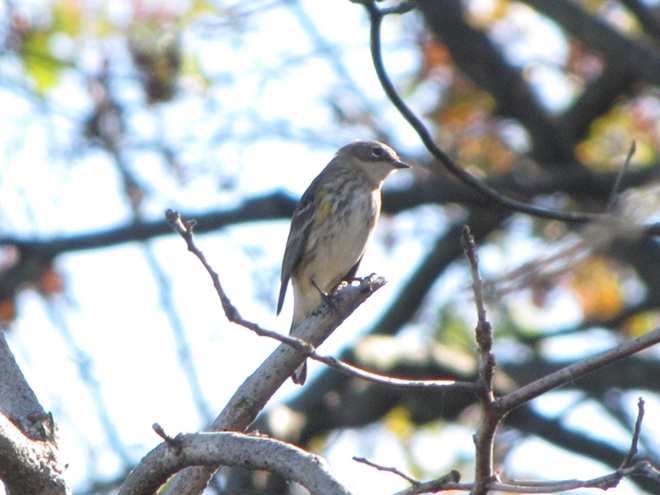
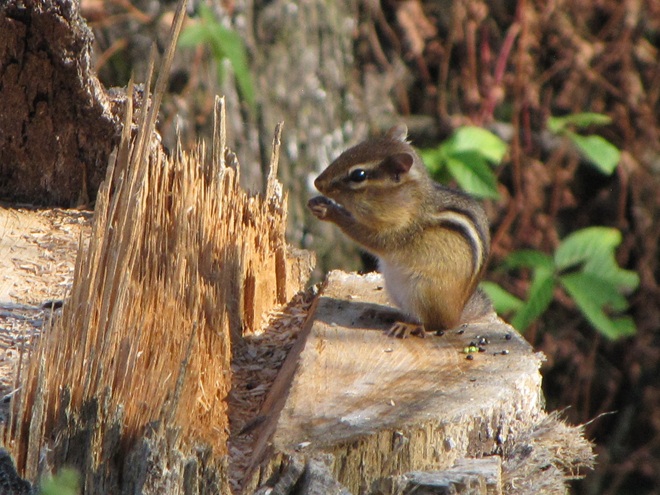

LIFE IN THE LOWER SUSQUEHANNA RIVER WATERSHED
A Natural History of Conewago Falls—The Waters of Three Mile Island
Having experienced our first frost throughout much of the lower Susquehanna valley last night, we can look forward to seeing some changes in animal behavior and distribution in the days and weeks to come. Here are a few examples…



With temperatures finally climbing to seasonable levels and with stormy sun filtering through the yellow-brown smoke coming our way courtesy of wildfires in Alberta and other parts of central Canada, we ventured out to see what might be basking in our local star’s refracted rays…












For many animals, an adequate shelter is paramount for their successful reproduction. Here’s a sample of some of the lower Susquehanna valley’s nest builders in action…




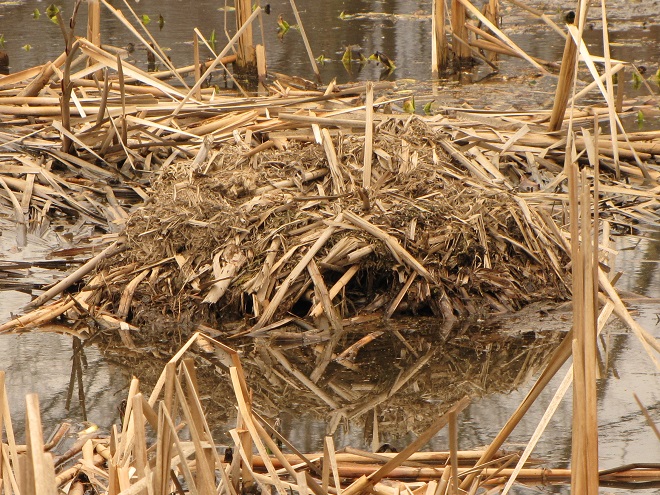















Soon after their arrival during the late 1600s, the earliest trans-Atlantic human migrants to settle the Lower Susquehanna River Watershed began the process of eliminating many of our largest native fish species. They started by extirpating nature’s steward of lowland streams and wetlands, the North American Beaver. The beaver’s meticulously maintained dams and fisheries-friendly ponds were promptly replaced by man-made impoundments designed to permanently divert water for powering lumber and grain mills. Behind these structures, silt deposits accumulated as the forests were clear cut and the land subjected to highly erosive farming methods. Mill dams would eventually be located on nearly every mile of suitable low-gradient stream in the basin. Populations of native coldwater fishes including Brook Trout were quickly lost or left isolated in scattered headwaters.
With their navigation of creeks blocked by nearly impenetrable mill dams, seasonally migratory freshwater and anadromous fish were denied access to their traditional spawning waters. The latter then had their populations seriously depleted, and in some cases extirpated, following construction of hydroelectric dams on the lower Susquehanna during the first half of the twentieth century. The loss these latter species, including the herrings, Striped Bass, and sturgeons, all of which attain great size only because of their ability to make a sea run to access the year-round food energy available in the Atlantic, constitute a tremendous reduction in the numbers, variety, and mass of fish occurring in the river and its tributaries.
Add to these events the various sources of pollution entering the lower Susquehanna’s waterways during the intervening years including acid mine drainage, agricultural nutrients and sediments, stormwater runoff, untreated domestic and industrial sewage, illegal dumping, pesticides, etc., and one can easily understand how the watershed’s native fishery was lost as a commercial, food, and recreational resource.
Presently, the effort to restore populations of self-sustaining anadromous fishes to the lower Susquehanna is stalled due to the presence of introduced invasive species, particularly Northern Snakeheads, in the river’s waters below Conowingo Dam. Lifts that carry migrating fishes over the lower river’s hydroelectric dams during the spring run are shut down to avoid extending the range of the hoards of non-native snakeheads to waters upstream of their present location. Any translocation of anadromous fish must now be completed by manually separating desired species from among the invaders and loading them into a tank truck for transport to waters upstream of the dams. But Northern Snakeheads are currently so prevalent at Conowingo that they are overwhelming the lift used for collecting and sorting fish as well.
Any slight hope that had existed for a return of harvestable stocks of American Shad or other sea-run native species to the Susquehanna and its tributaries seems to be fading. And widespread improvements to water quality that would promote reestablishment of sustained populations of native coldwater fishes like Brook Trout are strictly a long-range goal.
Recreational anglers, however, still remain in the game—but their reward is a bit of a booby prize. To compensate fisherman for the loss of their quarry on the river and in streams, and to promote an interest in the fishing pastime and conserving waterways, the stocking of various species of “game fish” has been a continuous undertaking, particular since the middle decades of the twentieth century. Some of these introductions are planned, others, like the release of Northern Snakeheads, are unsanctioned and outright illegal. The one thing most introductions have in common is that they consist of hardy, aggressive, predatory fishes that are non-native species (or native transplants from watersheds such as the Mississippi). Their presence, especially in large concentrations and particularly during the time immediately following introduction, can have a deleterious impact on native stream inhabitants. Some introduced fish, the Flathead Catfish for example, are upon discovery deemed invasive species; others, like the Smallmouth Bass, escape such a label not because they lack negative impacts on stream communities and ecosystems, but because they have been present for extended periods of time and have thus been accepted as part of the local fishing culture.

The creation of recreational fisheries comprised of introduced species has certainly helped maintain an interest in the fishing hobby and in the conservation of waterways. It has even been a driving force for spectacular restorations of streams that otherwise would have languished in an impaired condition with little in the way of diversity of species—native or non-native. As anglers, we are especially indebted to those who’ve devoted their time, energies, and, in some cases, a lot of money to projects that specifically seek to reestablish native waterways within the challenging landscape of the Lower Susquehanna River Watershed. With an eye on the future, perhaps now is a good time to join them and focus our passion for freshwater angling on steering fisheries management more toward the native ecosystems approach. Quality instead of quantity.
In that spirit, here are three items we can add to our tackle boxes this season to be better fisheries conservationists, instead of our own worst enemies.




Best of luck this fishing season. We hope your time outdoors will motivate you to get involved with efforts to keep your local waterways clean. You might even be inspired to assist with projects that are planned or currently underway in the Lower Susquehanna River Watershed to restore stream segments, wetlands, and floodplains. Many of these projects are grassroots efforts and they’d love to have your participation. Your local county conservation district can steer you towards an active restoration group near you. Give them a ring.

During Saturday’s Prescribed Fire Demonstration at the Pennsylvania Game Commission’s Middle Creek Wildlife Management Area, we noticed just how fast some species of wildlife return to areas subjected to burns administered to maintain grassland habitat and reduce the risk of high-intensity blazes.







Following the Prescribed Fire Demonstration, we decided to pay a visit to some of the parcels where burns had been administered one week earlier on the north side of Middle Creek’s main impoundment. We found a surprising amount of activity.







By late winter, sunshine and warming temperatures awaken the sleeping maples of the lower Susquehanna basin and the sap begins to flow. The new growing season is evident by the first days of spring when their swelling buds and flowers paint the drab gray canopy of deciduous woodlands with an overlying coat of red, orange, and maroon.


We’ve seen worse, but this winter has been particularly tough for birds and mammals in the Lower Susquehanna River Watershed. Due to the dry conditions of late summer and fall in 2024, the wild food crop of seeds, nuts, berries, and other fare has been less than average. The cold temperatures make insects hard to come by. Let’s have a look at how some of our local generalist and specialist species are faring this winter.


















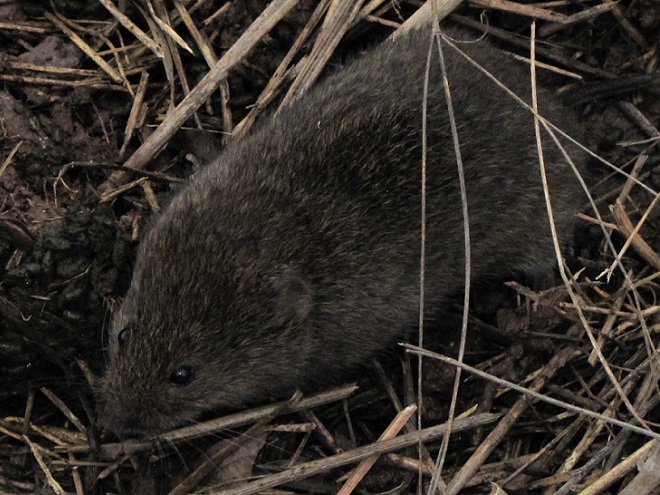


Wildlife certainly has a tough time making it through the winter in the lower Susquehanna valley. Establishing and/or protecting habitat that includes plenty of year-round cover and sources of food and water can really give generalist species a better chance of survival. But remember, the goal isn’t to create unnatural concentrations of wildlife, it is instead to return the landscape surrounding us into more of a natural state. That’s why we try to use native plants as much as possible. And that’s why we try to attract not only a certain bird, mammal, or other creature, but we try to promote the development of a naturally functioning ecosystem with a food web, a diversity of pollinating plants, pollinating insects, and so on. Through this experience, we stand a better chance of understanding what it takes to graduate to the bigger job at hand—protecting, enhancing, and restoring habitats needed by specialist species. These are efforts worthy of the great resources that are sometimes needed to make them a success. It takes a mindset that goes beyond a focus upon the welfare of each individual animal to instead achieve the discipline to concentrate long-term on the projects and processes necessary to promote the health of the ecosystems within which specialist species live and breed. It sounds easier than it is—the majority of us frequently become distracted.


On the wider scale, it’s of great importance to identify and protect the existing and potential future habitats necessary for the survival of specialist species. And we’re not saying that solely for their benefit. These protection measures should probably include setting aside areas on higher ground that may become the beach intertidal zone or tidal marsh when the existing ones become inundated. And it may mean finally getting out of the wetlands, floodplains, and gullies to let them be the rain-absorbing, storm-buffering, water purifiers they spent millennia becoming. And it may mean it’s time to give up on building stick structures on tinderbox lands, especially hillsides and rocky outcrops with shallow, eroding soils that dry to dust every few years. We need to think ahead and stop living for the view. If you want to enjoy the view from these places, go visit and take plenty of pictures, or a video, that’s always nice—then live somewhere else. Each of these areas includes ecosystems that meet the narrow habitat requirements of many of our specialist species, and we’re building like fools in them. Then we feign victimhood and solicit pity when the calamity strikes: fires, floods, landslides, and washouts—again and again. Wouldn’t it be a whole lot smarter to build somewhere else? It may seem like a lot to do for some specialist animals, but it’s not. Because, you see, we should and can live somewhere else—they can’t.


Our procrastinating groundhog
Susquehanna Stew
Is out to have a look around
Eight days overdue
Nibbling on some morsels
Basking in the sun
Almost three months since his last meal
Gee, that must be fun
But eating dried-up grasses
Might not do the trick
He might start feeling woozy
Or even getting sick
All this nonstop grazing
Stew’s just like a cow
He needs to find a way to stop
And end this binge right now
So when he saw his shadow
He knew just what to do
Time to head down under
‘Til wintertime is through
This crazy superstition
Sure did take its toll
The situation’s urgent
He’s headed for his hole
But Stew’s no fan of digging
Or all that woodchuck hype
This marmot has no burrow
His home’s a broken pipe
So if you want to see him
In springtime when it rains
Keep an eye on the clover field
Outside the flooding drains
Always a great time Stew. See you in the spring. And remember, it’s never a good idea to be late for dinner, so stay away from the carrots, celery, potatoes, and onions—someone may get the wrong idea!
Here are 7 reasons why you, during the coming week or so, should consider spending some time at Willow Point overlooking the lake at the Pennsylvania Game Commission’s Middle Creek Wildlife Management Area.
REASON NUMBER ONE— Wildlife is at close quarters along the trail leading from the parking lot to Willow Point…




REASON NUMBER TWO— A variety of waterfowl species are lingering on ice-free sections of the lake surrounding Willow Point…






REASON NUMBER THREE— Bald Eagles are conspicuous, easily seen and heard…


REASON NUMBER FOUR— Northern Harriers have been making close passes over Willow Point as they patrol Middle Creek’s grasslands while hunting voles…




REASON NUMBER FIVE— The annual observance of the White-tailed Deity holidays may be drawing to a close for the gasoline and gunpowder gang, but for the supreme ungulates, the rituals that lead to consummation of their unions are still ongoing…



REASON NUMBER SIX— Sandhill Cranes are still being seen from Willow Point…


REASON NUMBER SEVEN— The crowds that will accompany the arrival of thousands of Snow Geese in early 2025 can make visiting Willow Point a stressful experience. Visit now to see these birds and mammals at Willow Point and you might just have the place all to yourself. Then you can spend your time looking through the flocks of waterfowl and other birds for unusual new arrivals instead of wading through a sea of humanity.

If you provide supplemental foods for the birds visiting your garden sanctuary, we don’t need to tell you how expensive those provisions have become. It can be quite frustrating when the majority of these pricey supplies get gobbled up by the chunky squirrels that dominate your feeding station and leave hungry birds with nothing but the tiny little scraps.
Here at susquehannawildlife.net headquarters, we like to feed whole peanuts in the shell to the resident and migratory native birds. But placed out in the open on a stump or a tray, or even within a hopper feeder, peanuts are quickly carried away and cached for latter use by squirrels and jays. The chickadees, titmice, nuthatches, wrens, and woodpeckers that could really use the extra food to maintain their body fat through the winter get nothing but leftovers.

We’ve discovered a solution that, for us, saves money and more efficiently feeds the native species of birds that stop by our oasis. We’ve been using inexpensive ($6-$8) wire mesh tube feeders intended for suet nuggets to serve whole peanuts in the shell to our guests. As long as they can’t knock the feeders to the ground, squirrels have failed to raid the contents. Like other birds, Blue Jays can still peck away to remove the peanuts from their shells and eat them on the spot, but they can no longer haul off a whole feeder load at a time. Each must carefully crack the shell and remove an individual peanut or portion thereof for immediate consumption. The empty shells remain mostly in the tubes and don’t make a mess. Pesky hoards of non-native European Starlings sometimes visit, but soon become frustrated because their bills aren’t adapted for cracking the hardened peanut husks; they grab any loose morsels they can get, then move along.

The list of native birds visiting our peanut feeders includes:
Downy Woodpecker
Hairy Woodpecker
Red-bellied Woodpecker
Northern Flicker
Yellow-bellied Sapsucker
Blue Jay
Carolina Chickadee
Black-capped Chickadee
Tufted Titmouse
White-breasted Nuthatch
Red-breasted Nuthatch
Carolina Wren

So don’t pay hard-earned cash to feed nothing but leftovers to your intended guests, give wire mesh tube feeders and whole peanuts in the shell a try. The colorful native birds will thank you with their presence.



Mid-November is our favorite time of year to visit Hawk Mountain Sanctuary on Blue Mountain/Kittatinny Ridge just to the east of the lower Susuquehanna valley near Kempton, Pennsylvania. By now, the huge crowds that come to see October’s world-famous raptor flights and spectacular fall foliage have dwindled to small groups of serious hawkwatchers and hardy trail enthusiasts. Join us as we drop in on the Keystone State’s most famous birding destination.
























If the cold of mid-November doesn’t cramp your style, and if you’d like to seize your best opportunity for a much-coveted sighting of one or more of the late-season specialties, then now is the time to visit Hawk Mountain Sanctuary. Bring a cushion upon which to sit, dress in layers, pack a lunch, and plan to spend the day. You could be rewarded with memorable views of the seldom-encountered species some people spend years of their lives hoping to see.
To learn more, check out the Hawk Mountain Sanctuary website.
For many species of terrestrial vertebrates living in the lower Susquehanna valley, it’s time to take refuge in a safe place below ground to enter a winter-long slumber. The numerous frosty nights of the past two weeks have expedited the stragglers’ efforts to find a suitable place to pass our coldest months.


And now, just in time for Halloween, a look at some hibernating species that some of our more squeamish readers consider to be “scary”.
In the mountainous forests of the Ridge and Valley Province, there lives a seldom seen little mouse which, unlike the more familiar species found in the fields, farms, and homes of our valleys and Piedmont, spends almost half the year in true hibernation.

In spring and fall, Eastern (Black) Ratsnakes are frequently seen basking in the sun as they absorb heat and get their metabolism going. During the hottest days of summer, when ambient air temperature is sufficient for their needs, they become nocturnal, hunting mice and other creatures that are also active at night. During October, they make their way back to a winter den where they will remain until March or April.




That’s right, all three of these snakes are known to cohabitate, not just during hibernation, but at other times of the year as well. And you thought they were mean and nasty to anything and everything in their path, didn’t you?
Here in the northeastern United States, fear of indigenous wild snakes is a totally irrational anxiety. It’s a figment of our indoctrination. Their wicked reputation is almost exclusively the result of a never-ending stream of demonizing propaganda from the pulpit, press, parents, panicked, and picture shows. All they want from you and I is to be left alone. Want something to really be afraid of this Halloween? Try domestic dogs. That’s right—the “friendly” pooch. In the United States, they’ll land hundreds of people in the emergency room today. Don’t like that one. How ’bout cars and trucks. They’ll kill and maim people all day long. And don’t forget about sugar. Yes friends, that sweet treat is pure poison that kills all day long. Happy Halloween!
SOURCES
Merritt, Joseph F. 1987. Guide to the Mammals of Pennsylvania. University of Pittsburgh Press. Pittsburgh, PA. pp.230-233.
Shaffer, Larry L. 1991. Pennsylvania Amphibians and Reptiles. Pennsylvania Fish Commission. Harrisburg, PA.
In recent days, the peak northbound push of migratory birds that includes the majority of our colorful Neotropical species has been slowed to a trickle by the presence of rain, fog, and low overcast throughout the Mid-Atlantic States. Following sunset last evening, the nocturnal flight resumed—only to be grounded this morning during the pre-dawn hours by the west-to-east passage of a fast-moving line of strong thundershowers. The NOAA/National Weather Service images that follow show the thunderstorms as well as returns created by thousands of migrating birds as they pass through the Doppler Radar coverage areas that surround the lower Susquehanna valley.
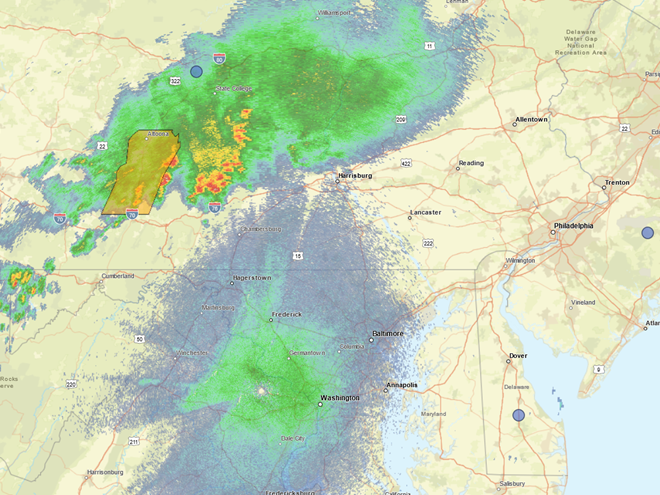
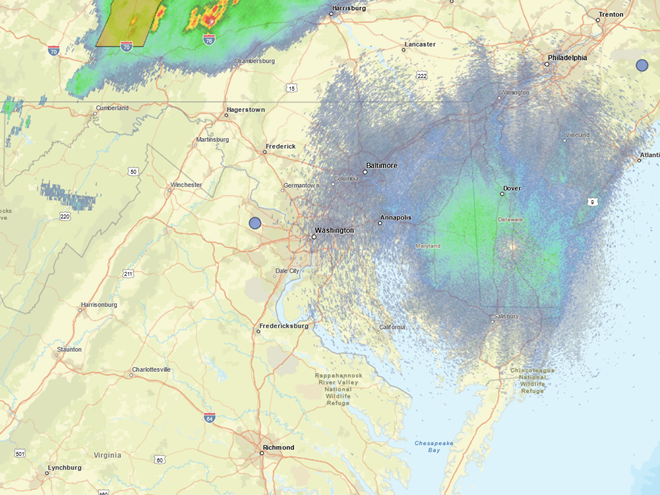
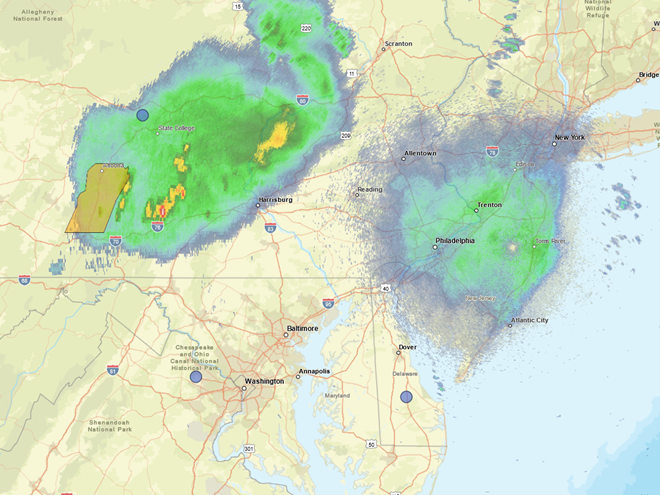
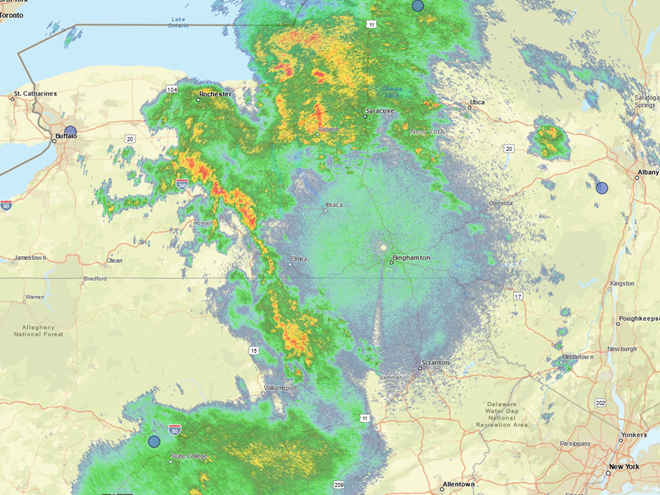
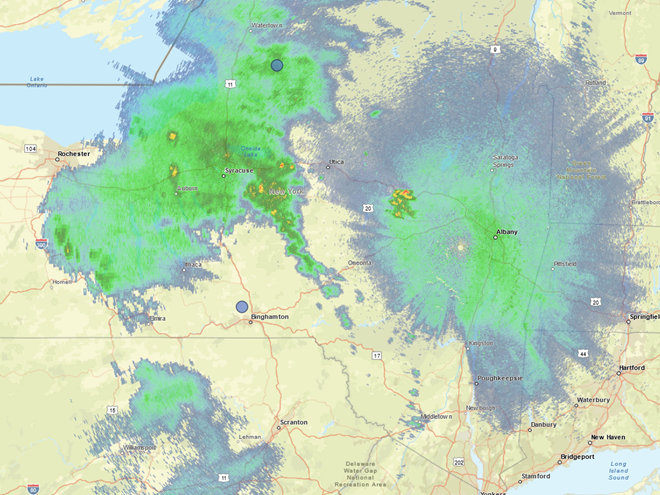
Just after 4 A.M., flashes of lightning in rapid succession repeatedly illuminated the sky over susquehannawildlife.net headquarters. Despite the rumbles of thunder and the din of noises typical for our urban setting, the call notes of nocturnal migrants could be heard as these birds descended in search of a suitable place to make landfall and seek shelter from the storm. At least one Wood Thrush and a Swainson’s Thrush (Catharus ustulatus) were in the mix of species passing overhead. A short time later at daybreak, a Great Crested Flycatcher was heard calling from a stand of nearby trees and a White-crowned Sparrow was seen in the garden searching for food. None of these aforementioned birds is regular here at our little oasis, so it appears that a significant and abrupt fallout has occurred.
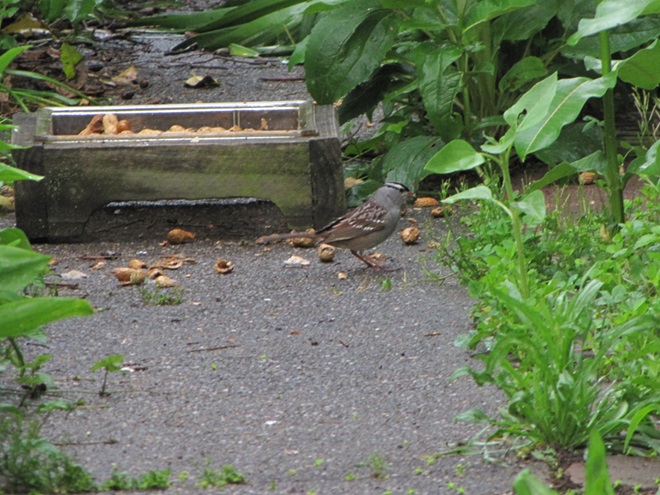
Looks like a good day to take the camera for a walk. Away we go!
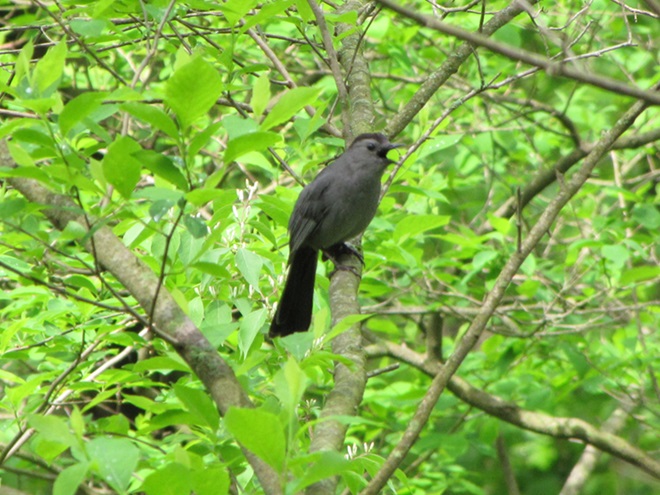
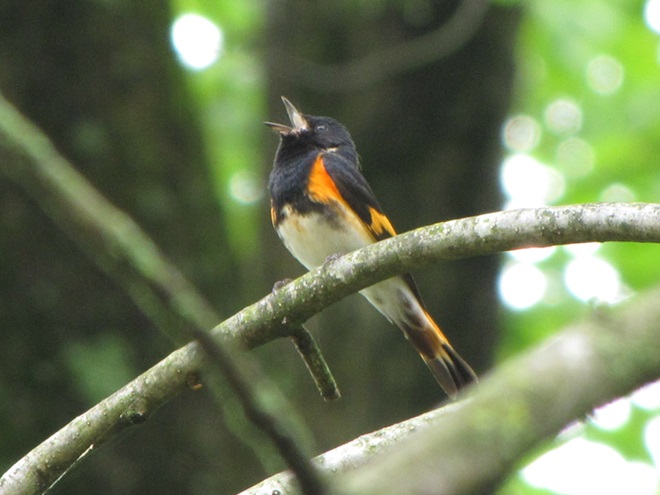
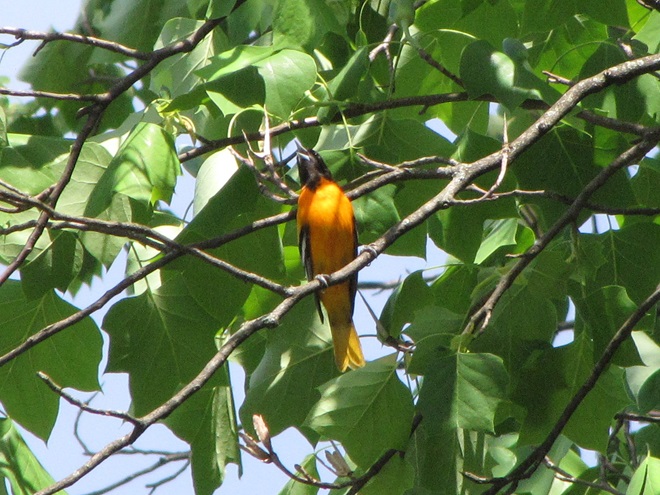
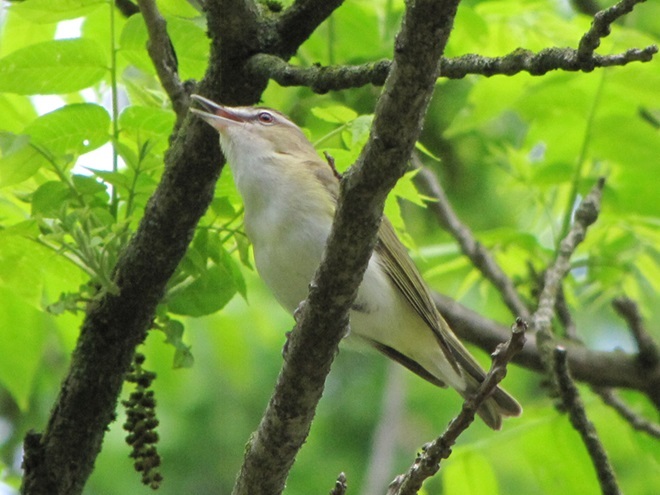
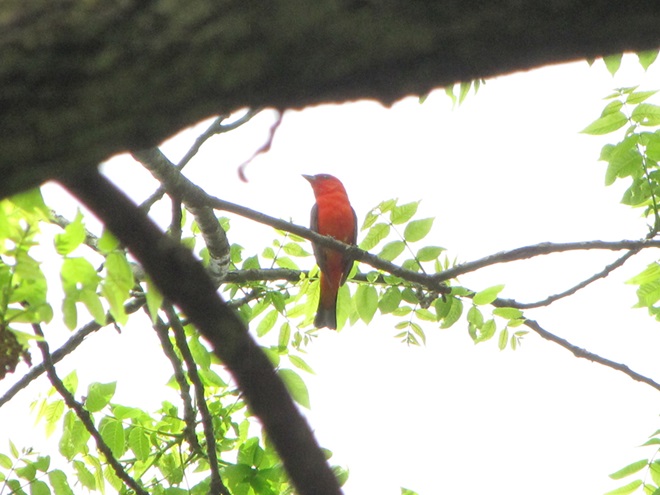
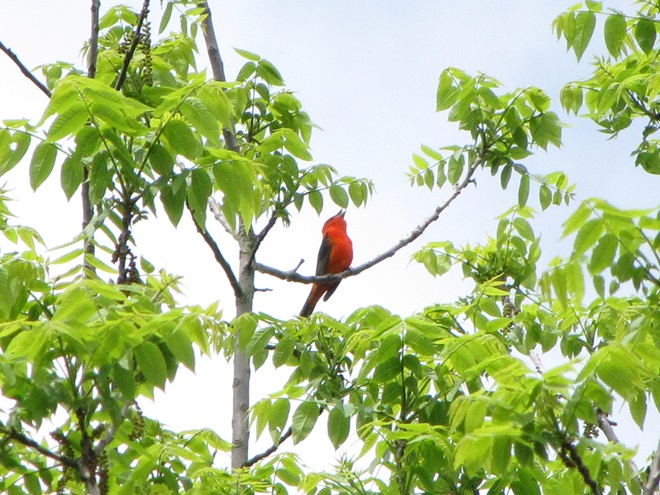
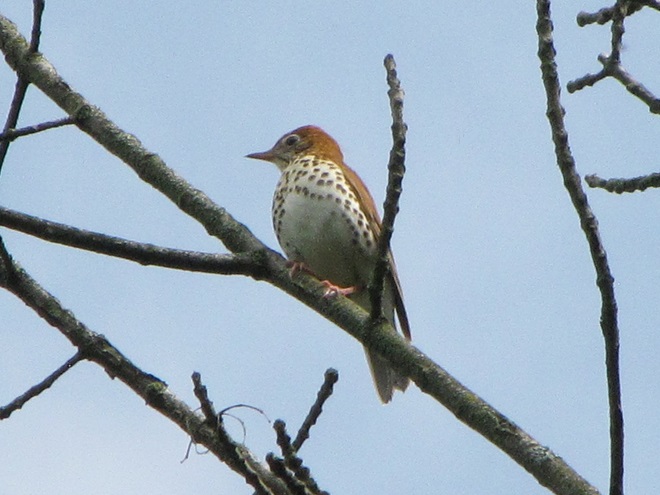
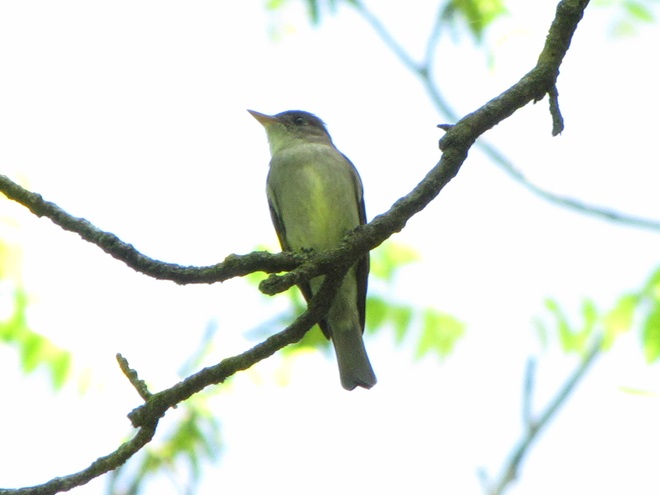
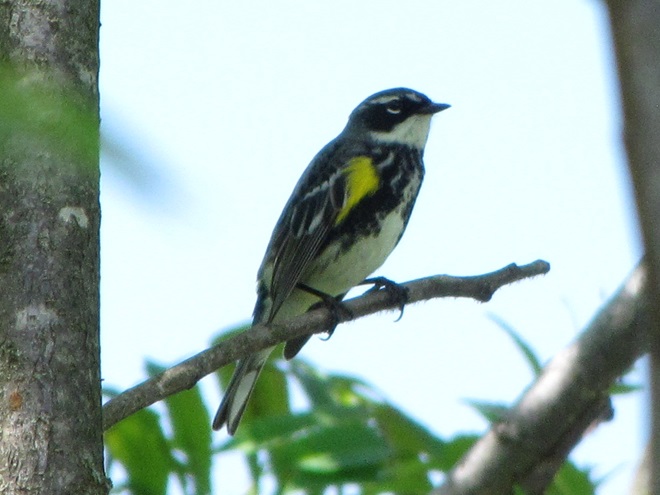
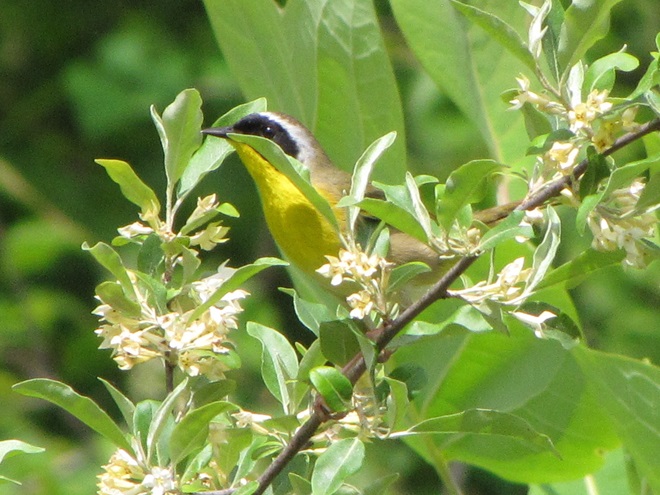
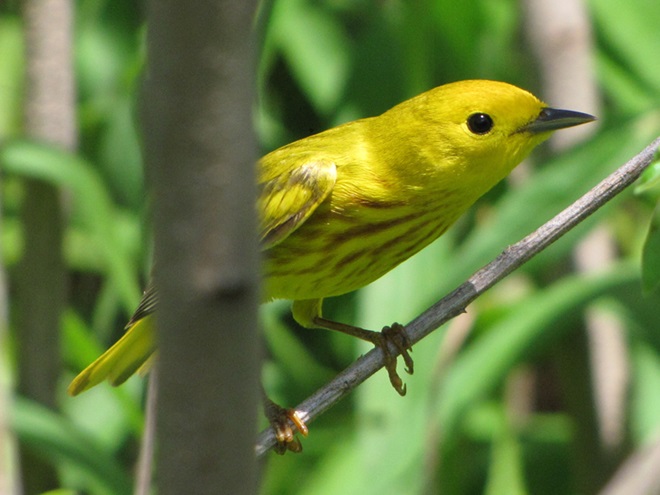
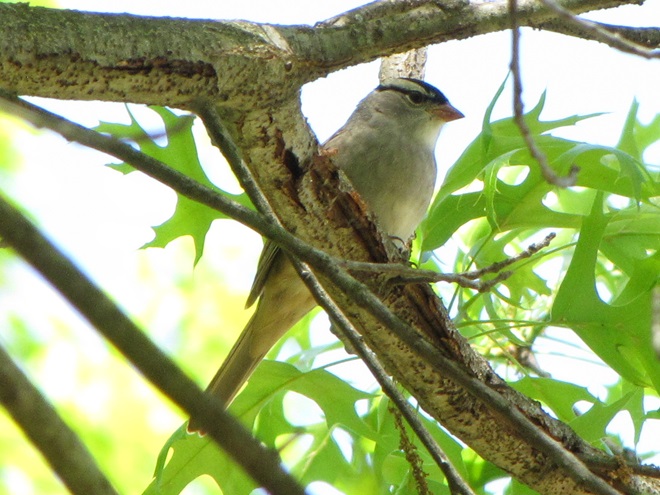
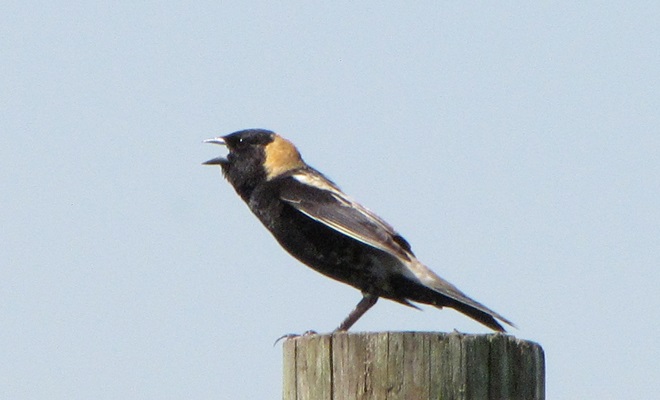
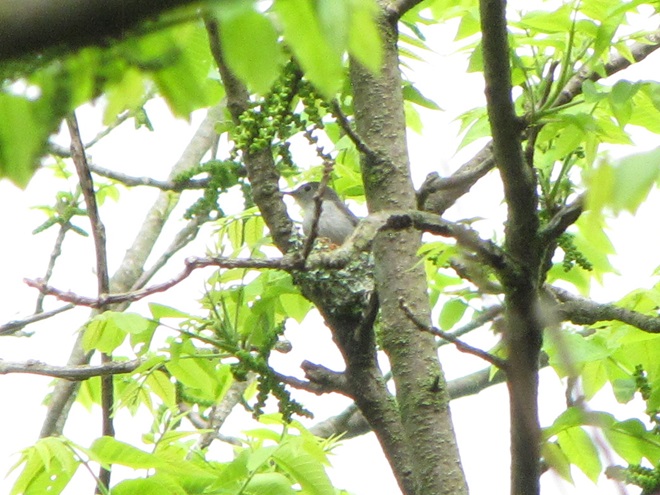
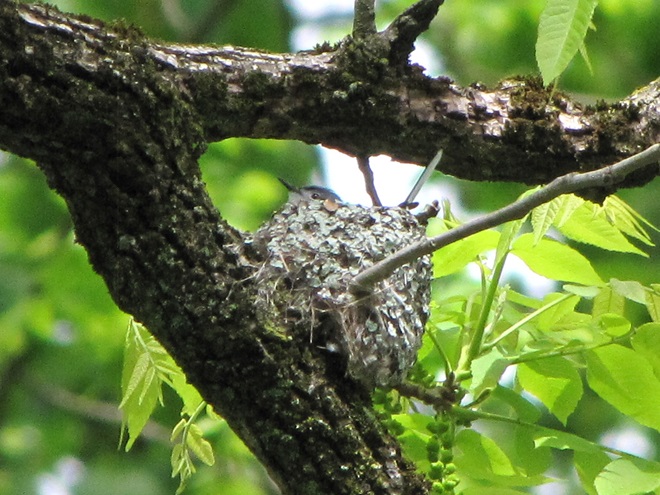
There’s obviously more spring migration to come, so do make an effort to visit an array of habitats during the coming weeks to see and hear the wide variety of birds, including the spectacular Neotropical species, that visit the Lower Susquehanna River Watershed each May. You won’t regret it!
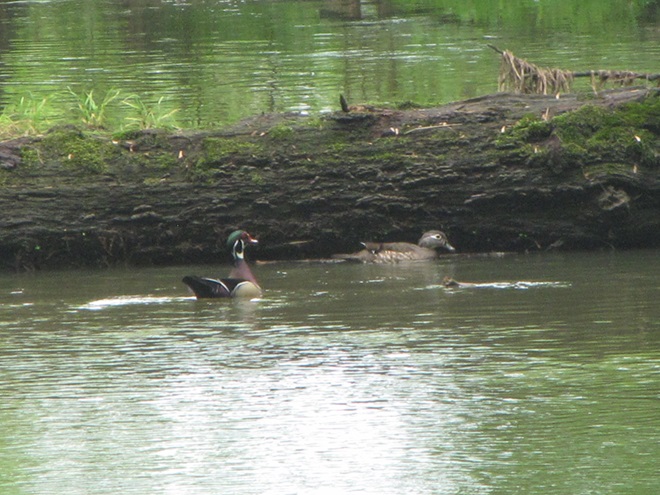
As week-old snow and ice slowly disappears from the Lower Susquehanna River Watershed landscape, we ventured out to see what might be lurking in the dense clouds of fog that for more than two days now have accompanied a mid-winter warm spell.
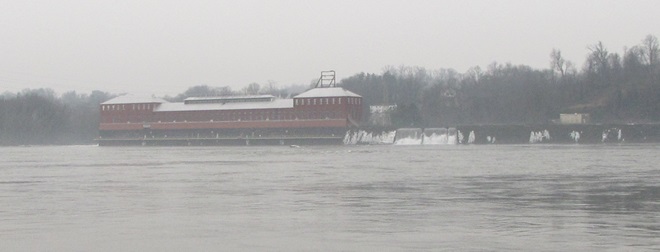
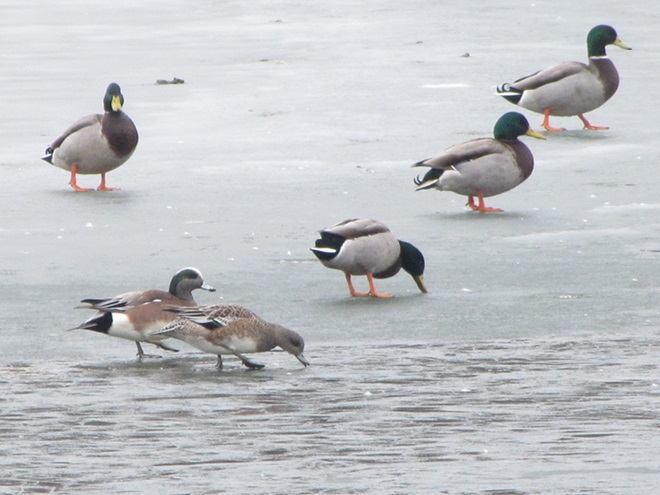
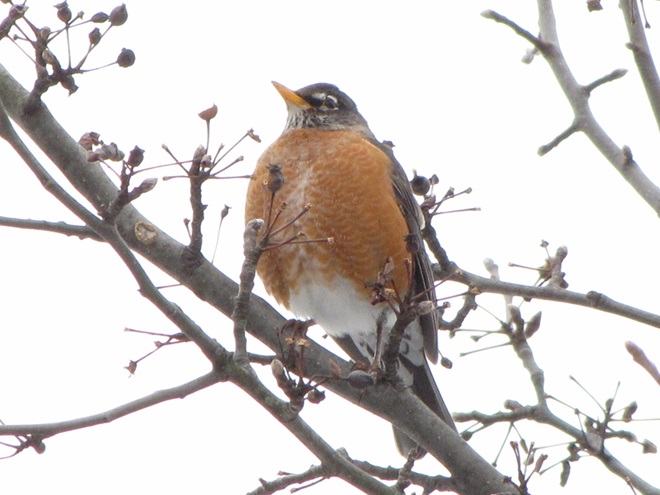
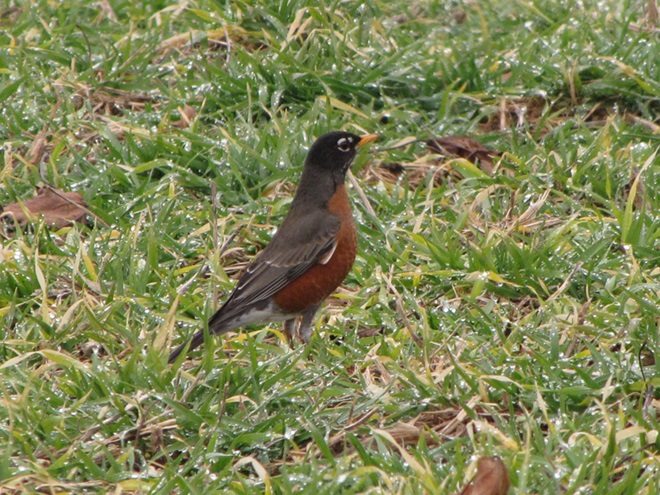
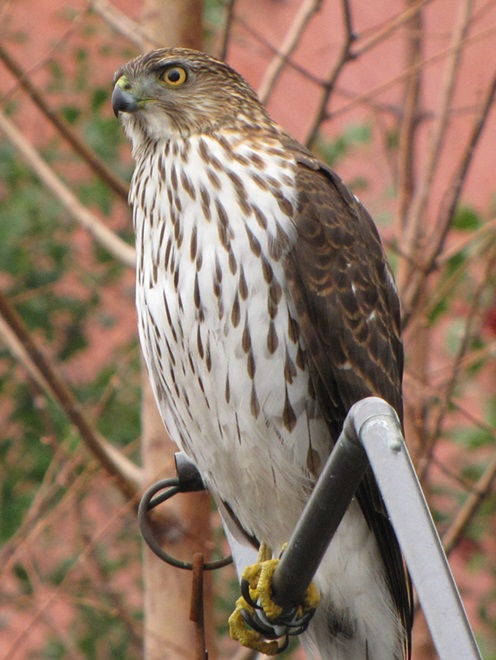
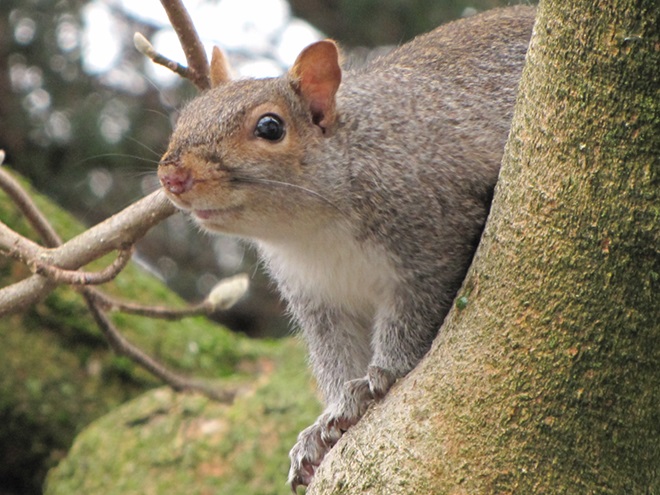
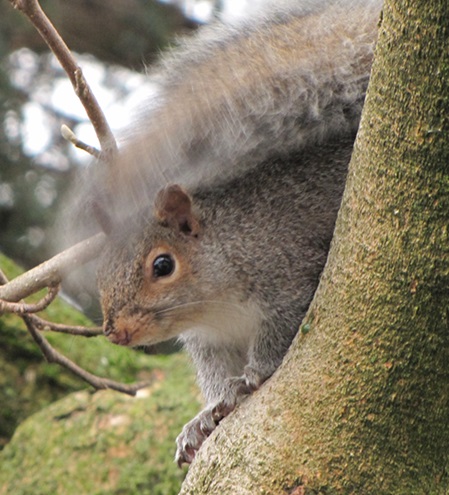
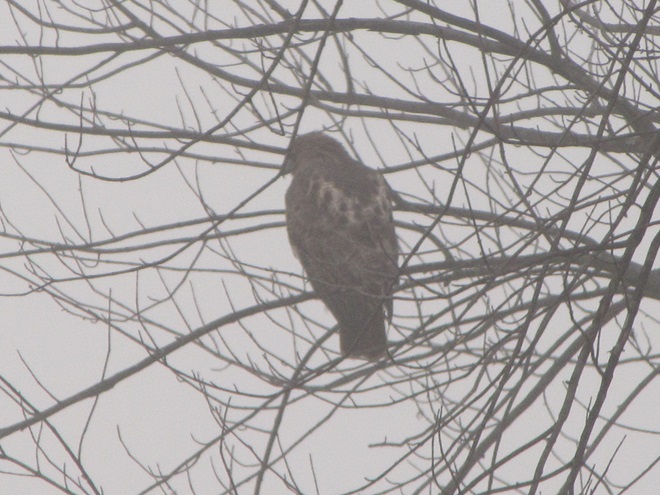
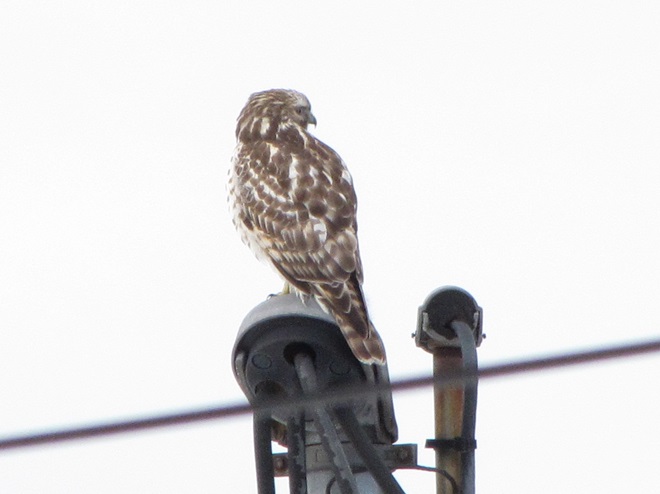
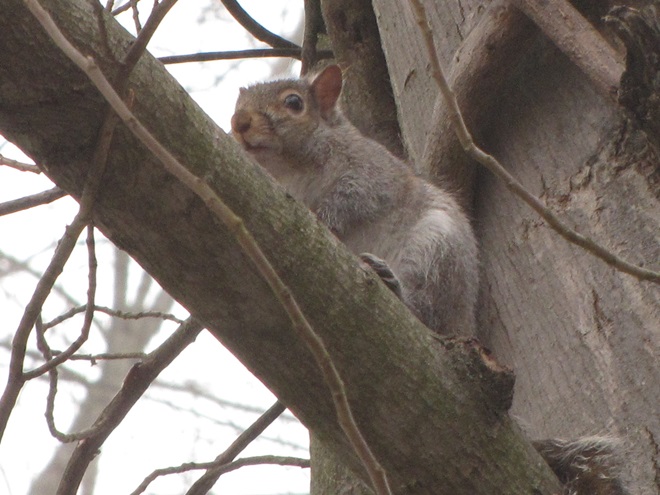
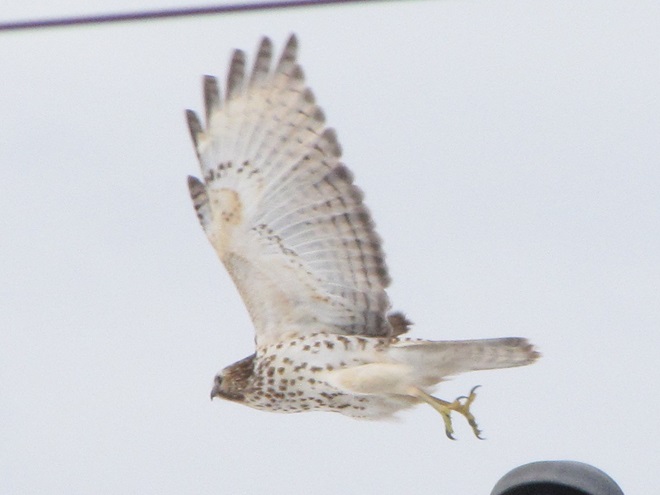
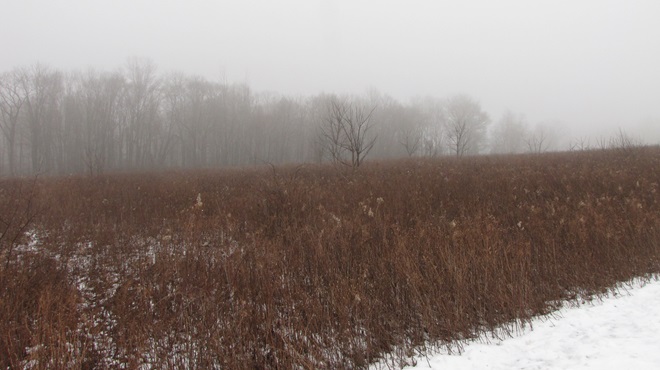
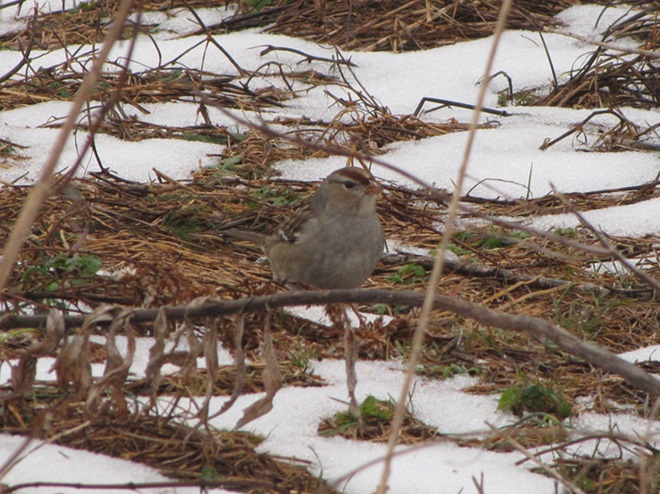
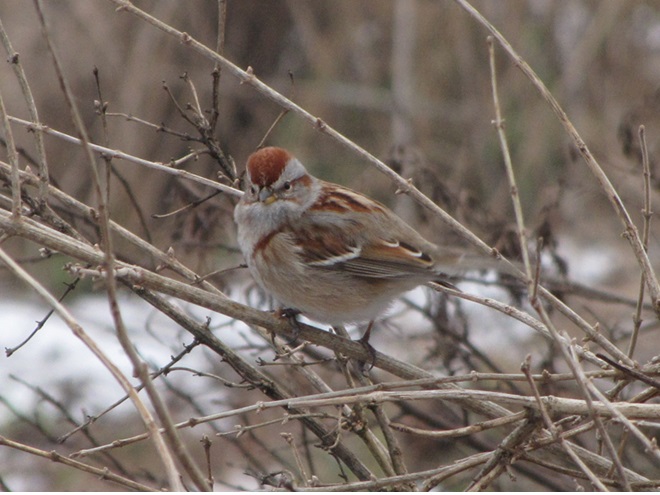
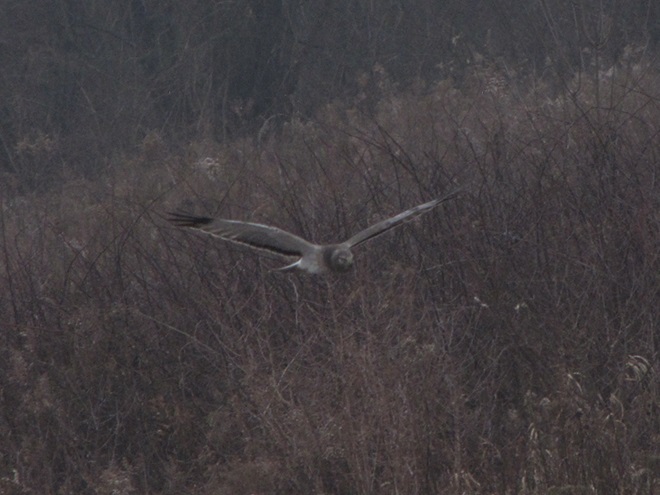
If scenes of a January thaw begin to awaken your hopes and aspirations for all things spring, then you’ll appreciate this pair of closing photographs…
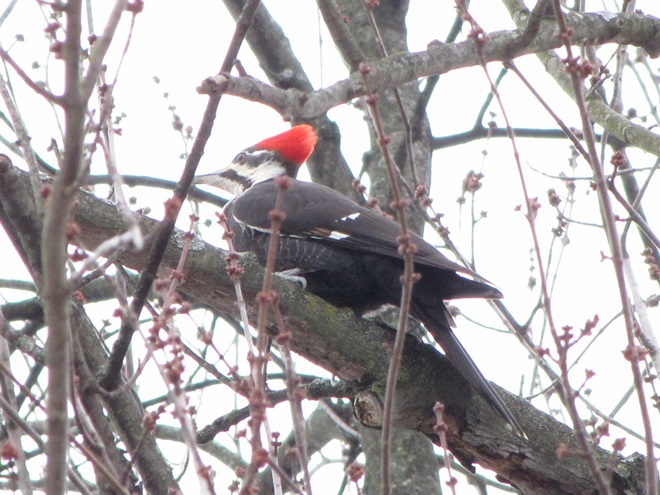
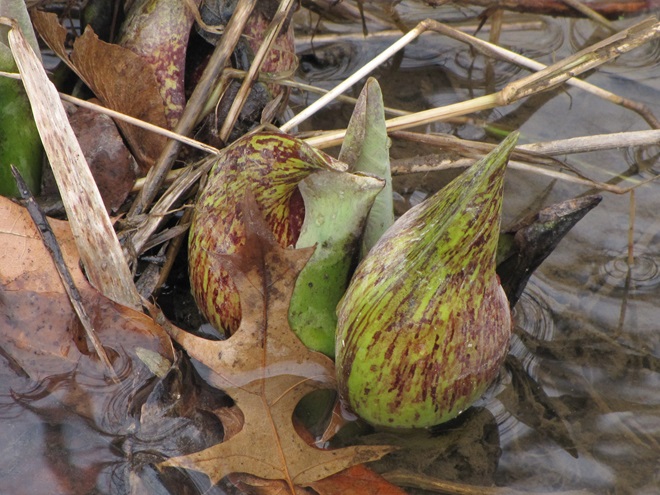
A glimpse of the rowdy guests crowding the Thanksgiving Day dinner table at susquehannawildlife.net headquarters…
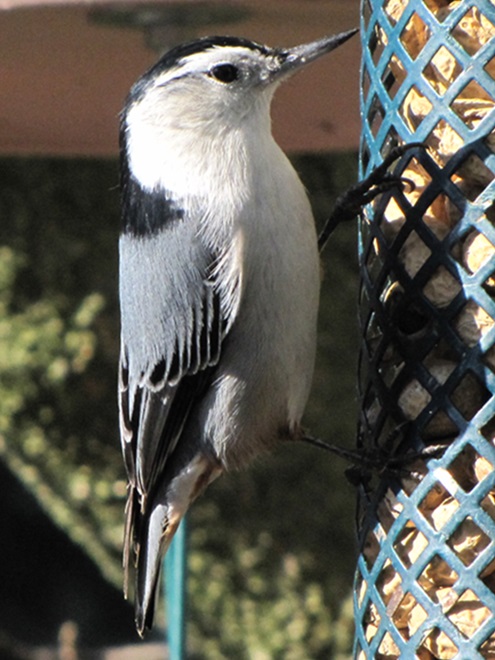
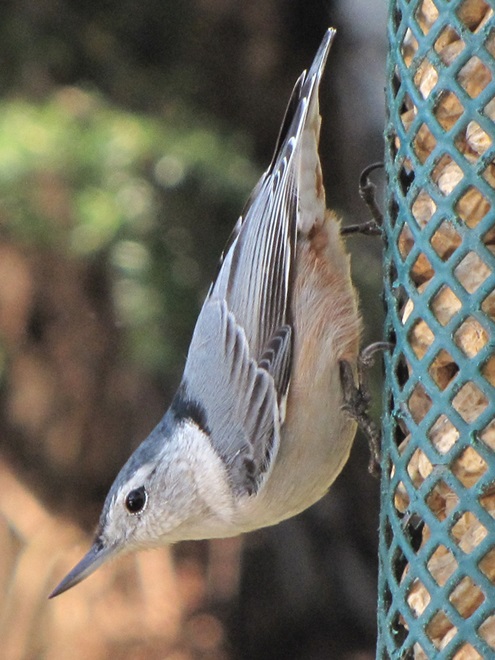
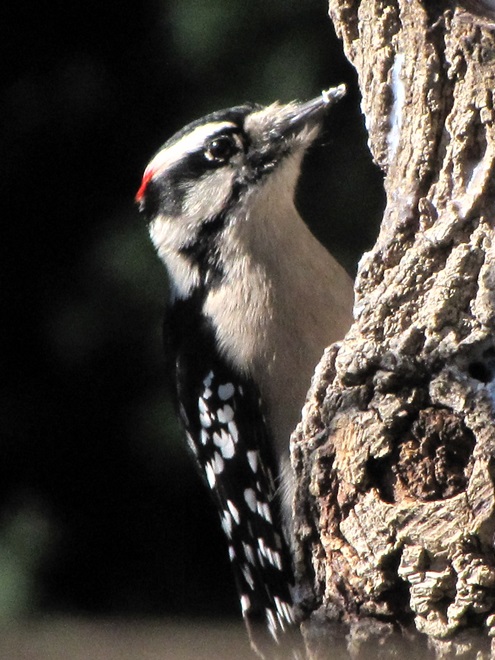
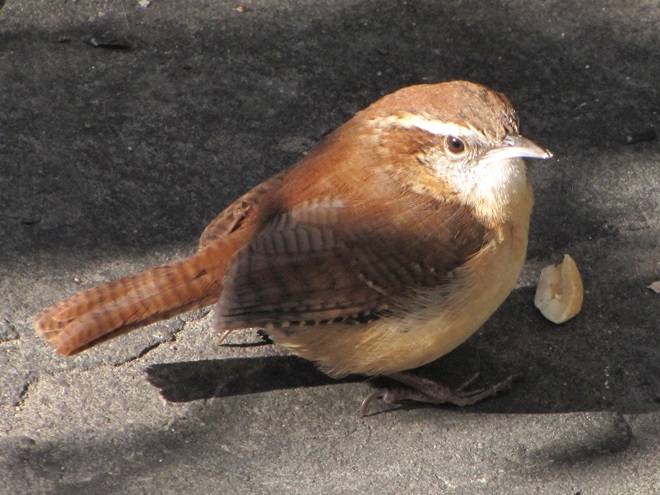
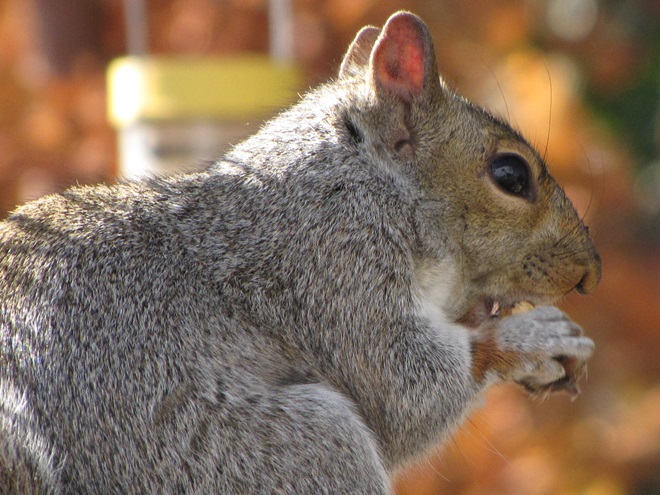
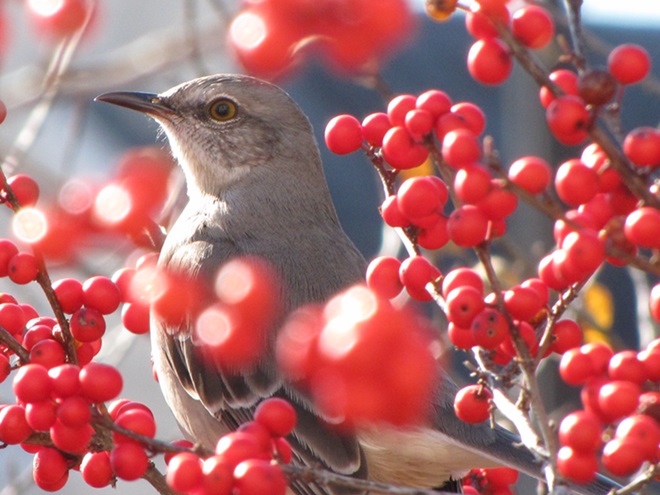
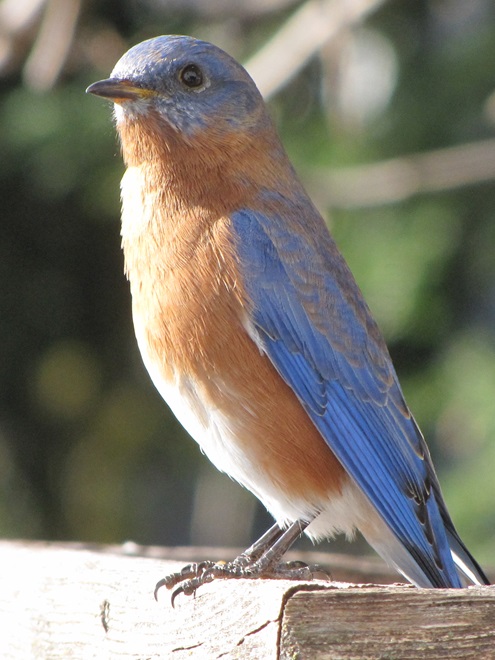
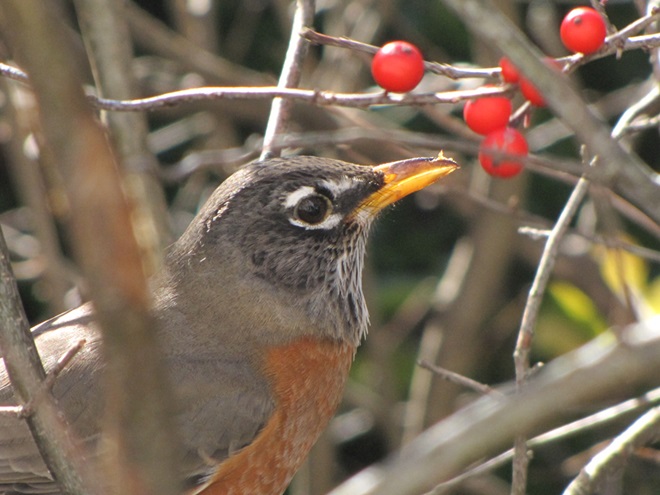
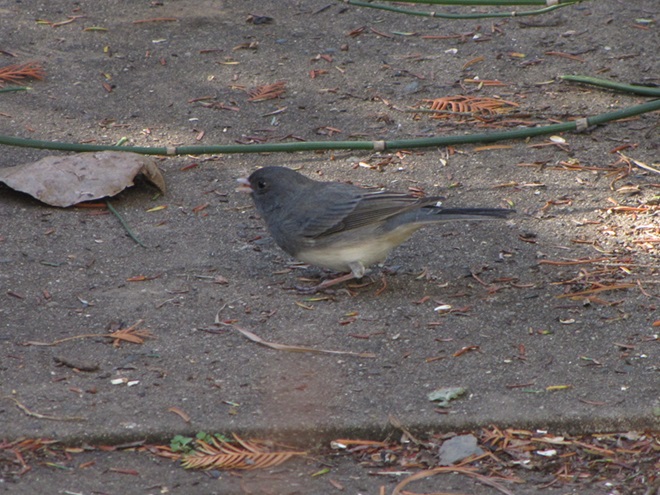
To pass the afternoon, we sat quietly along the edge of a pond created recently by North American Beavers (Castor canadensis). They first constructed their dam on this small stream about five years ago. Since then, a flourishing wetland has become established. Have a look.

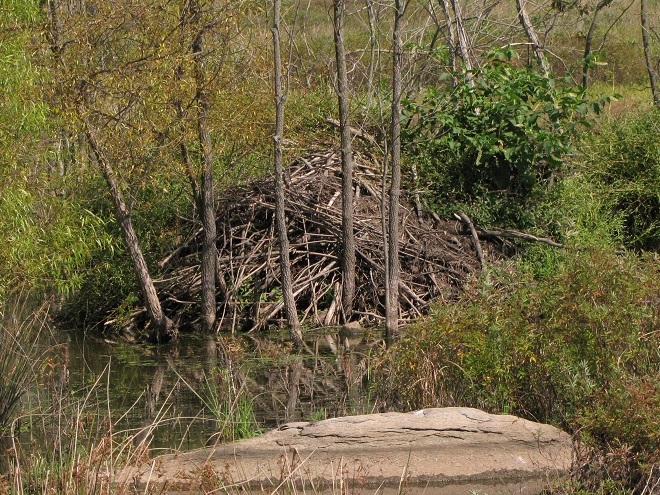
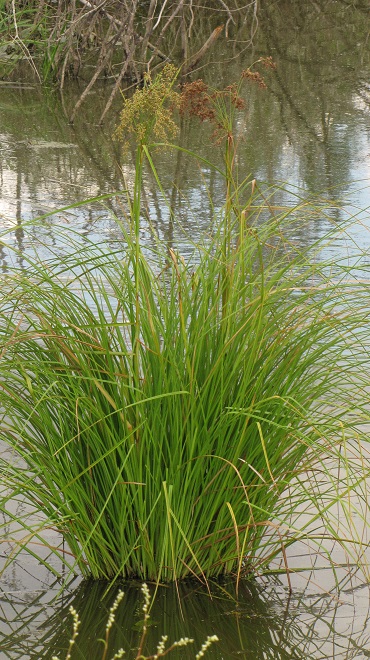
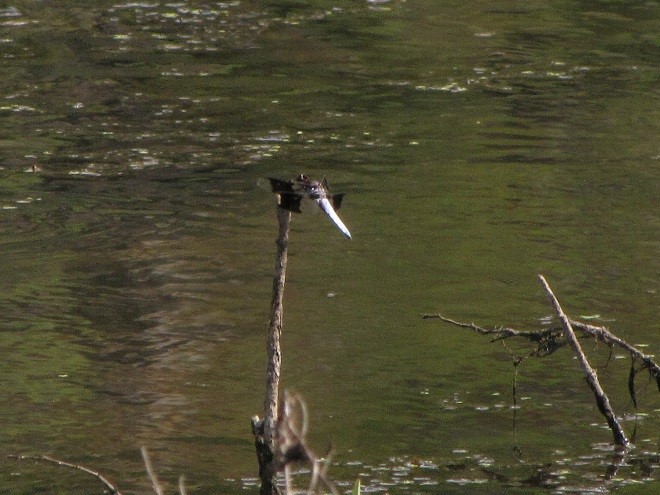
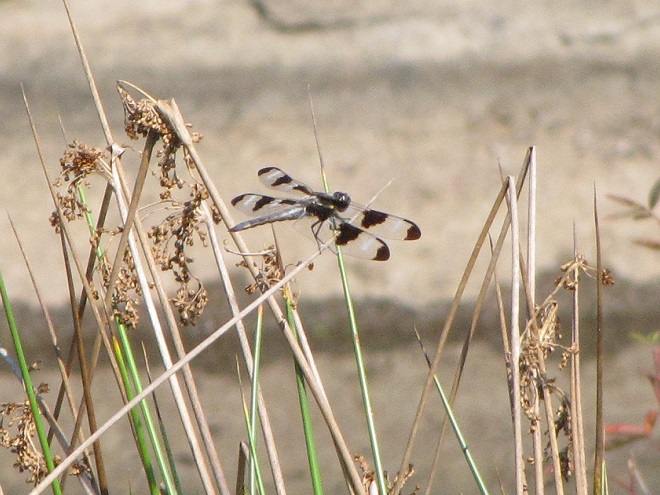
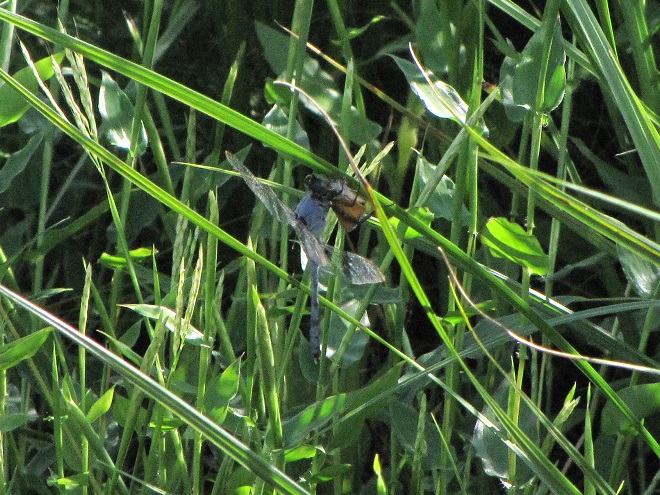
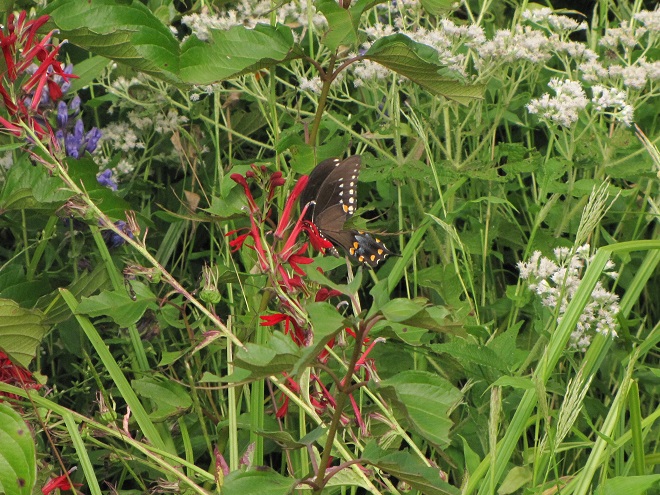
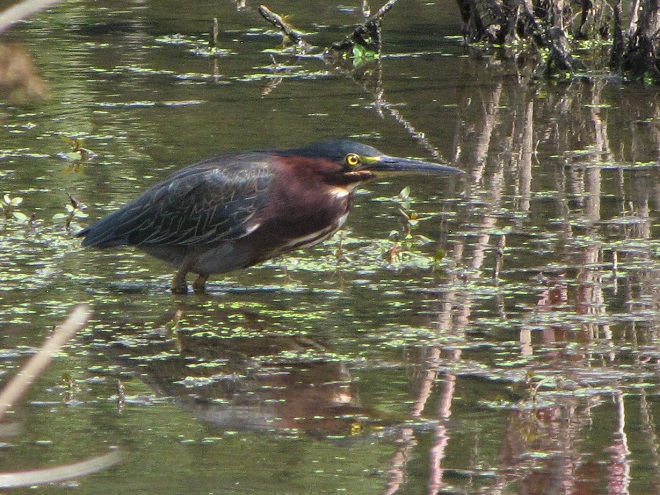
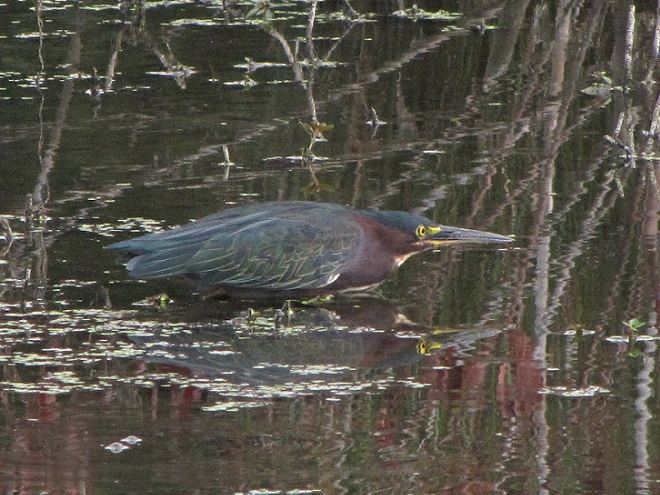
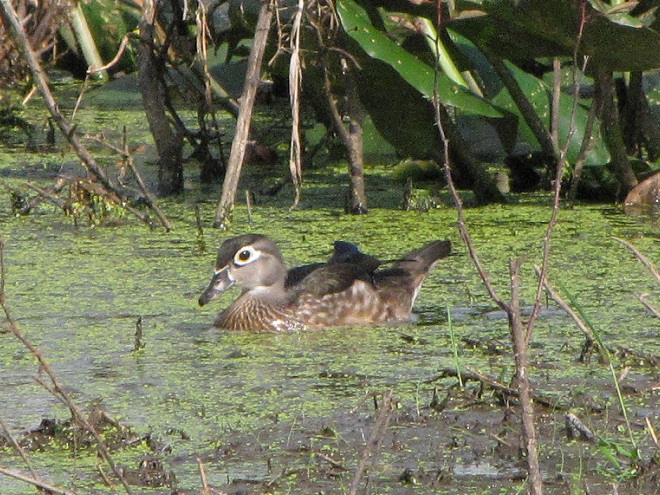
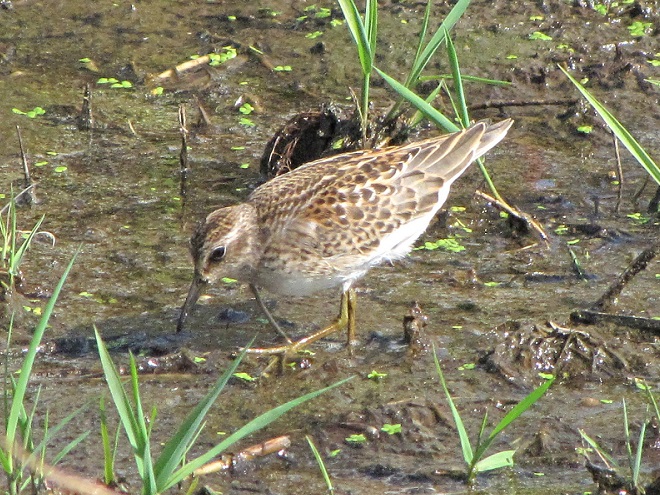
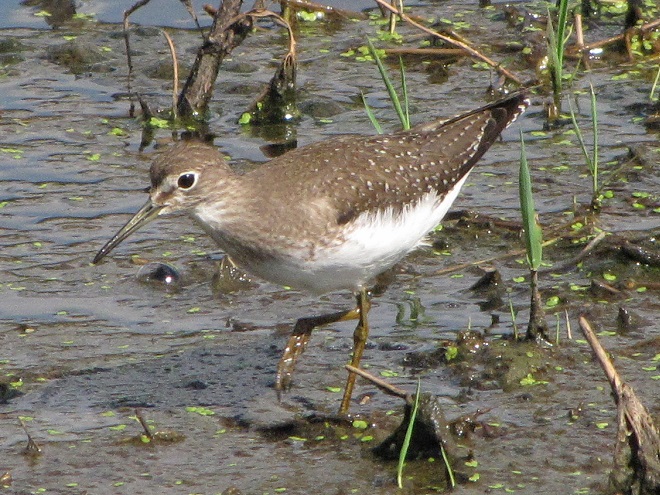
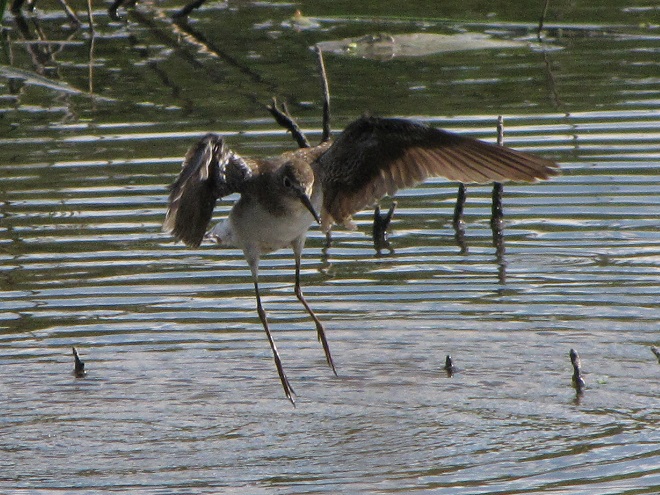
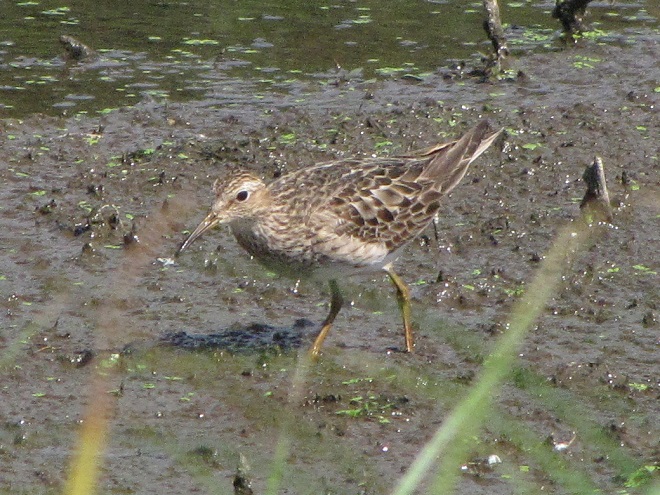
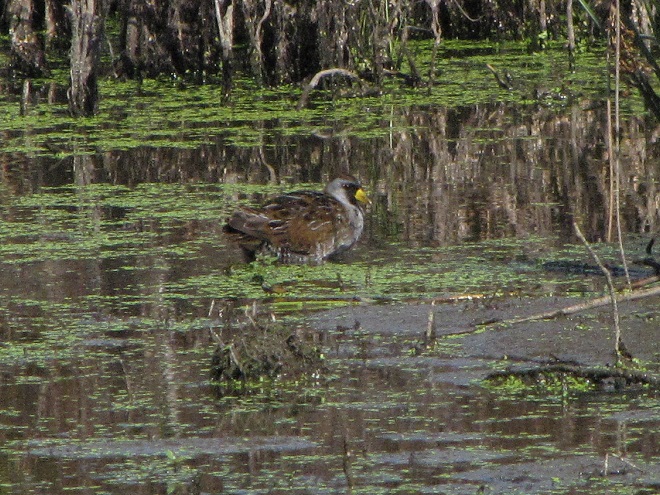
Isn’t that amazing? North American Beavers build and maintain what human engineers struggle to master—dams and ponds that reduce pollution, allow fish passage, and support self-sustaining ecosystems. Want to clean up the streams and floodplains of your local watershed? Let the beavers do the job!
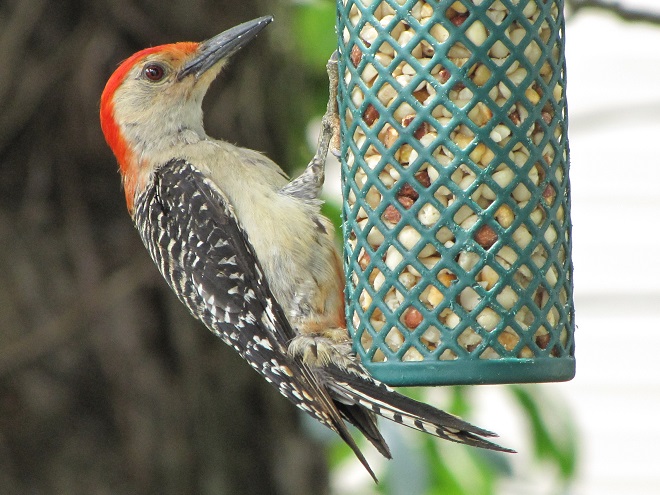
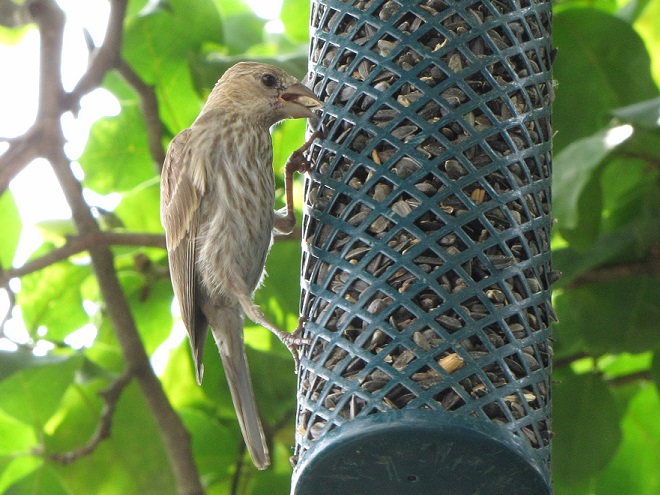
For members of the gasoline and gunpowder gang in Pennsylvania, the coming two weeks are the second-biggest holiday of the year. Cloaked in ceremonial orange, worshipers of the White-tailed Deity are making their annual pilgrimage into the great outdoors to beat the bushes in search of their idol. For the fortunate among the faithful, their devotion culminates in a testosterone/adrenaline-charged sacrifice of the supreme being.
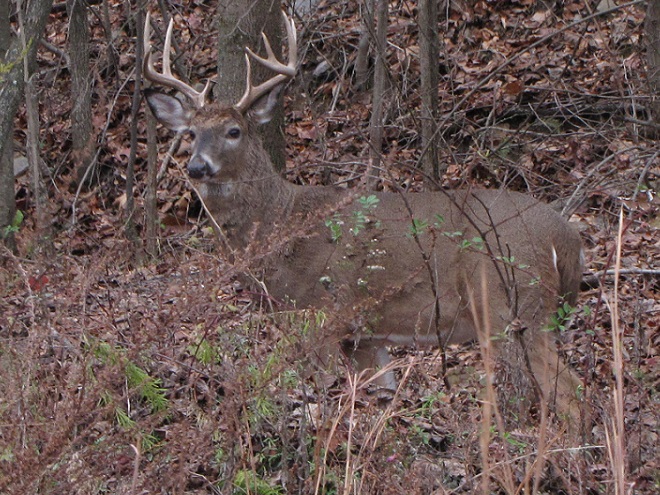
Remember, emotions run high during this blood-letting festival—sometimes overwhelming secular attributes like logic and rational decision-making. You don’t want to be in the crossfire—so stay out of the woods!
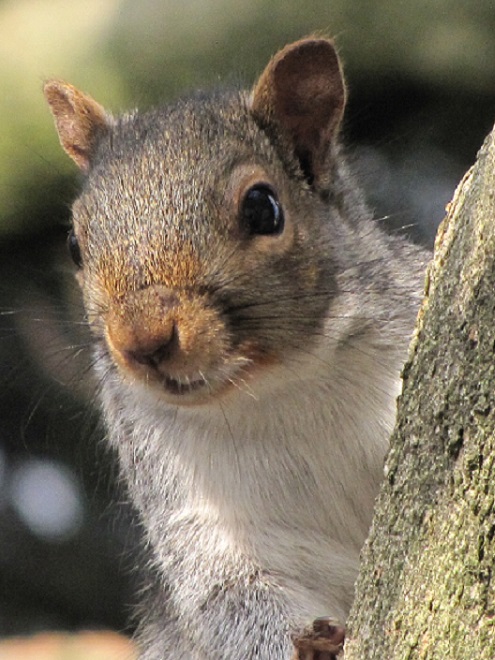
Along the lower Susquehanna, an unseasonably mild day in early spring can provide an observer with the opportunity to witness an annual spectacle seldom seen by the average visitor to the river—concentrations of dozens, sometimes hundreds, of turtles as they emerge from their winter slumber to bathe in the year’s first surge of warm air and sunshine.
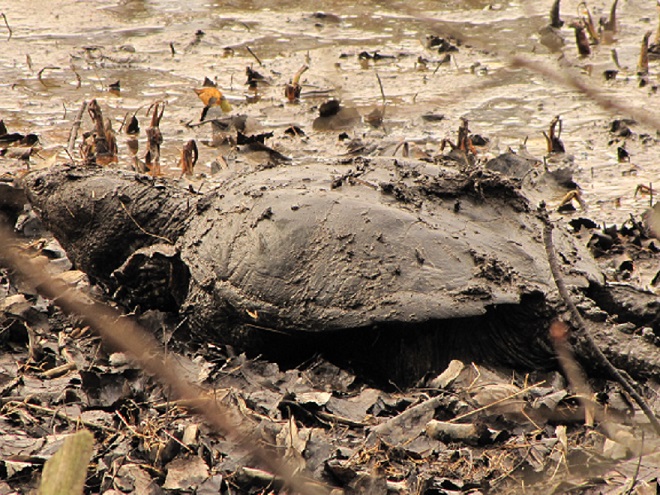
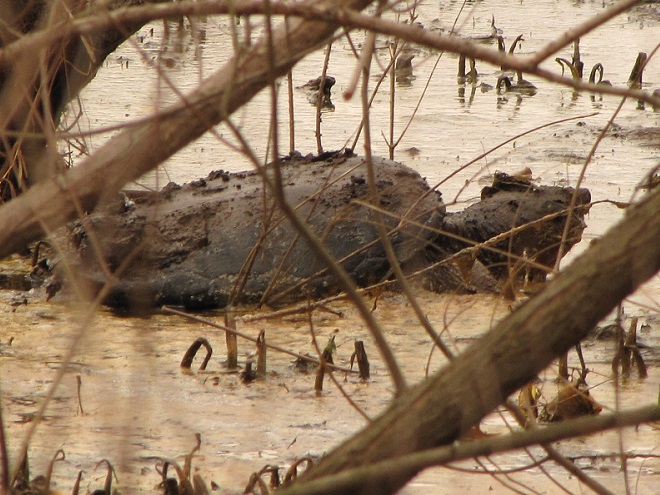
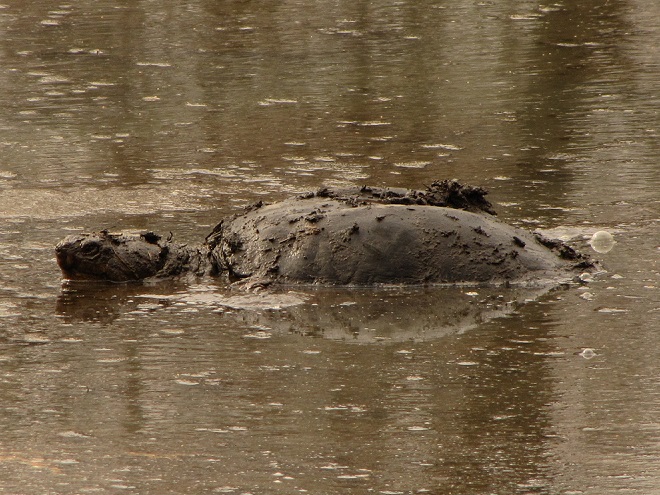
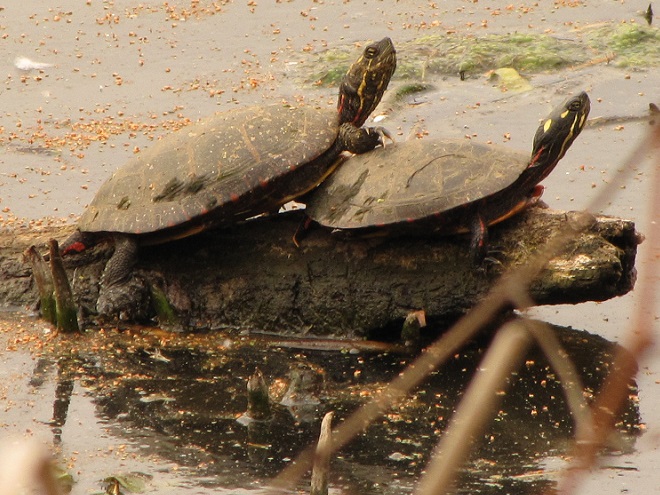
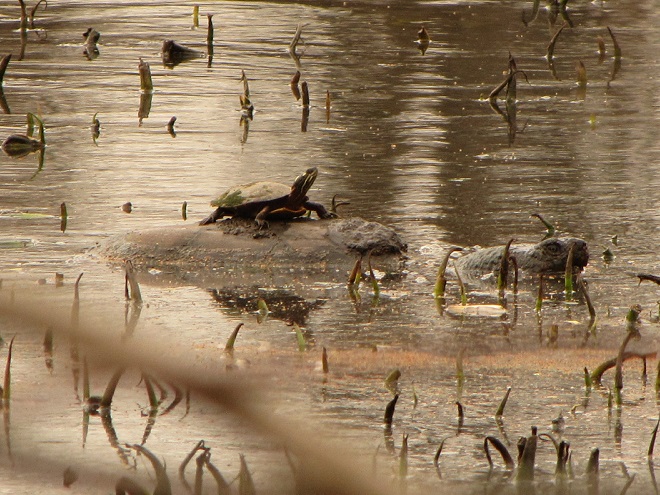
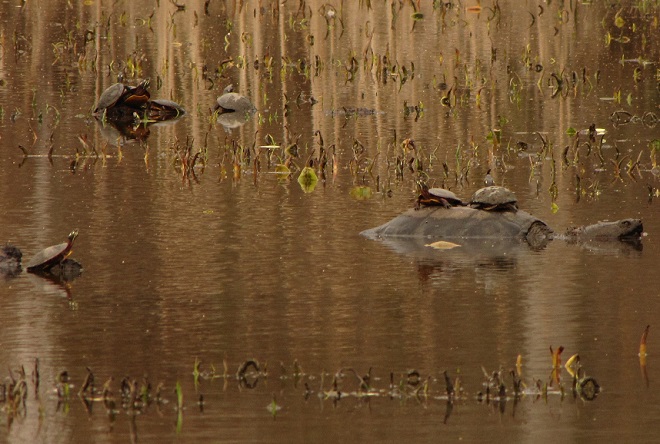
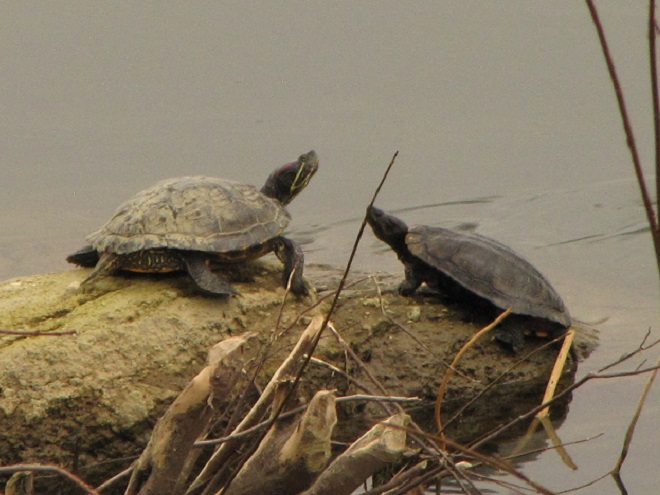
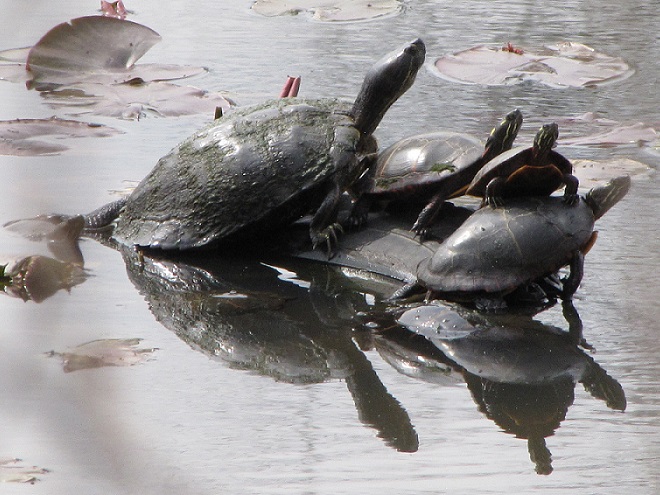
Despite being located in an urbanized downtown setting, blustery weather in recent days has inspired a wonderful variety of small birds to visit the garden here at the susquehannawildlife.net headquarters to feed and refresh. For those among you who may enjoy an opportunity to see an interesting variety of native birds living around your place, we’ve assembled a list of our five favorite foods for wild birds.
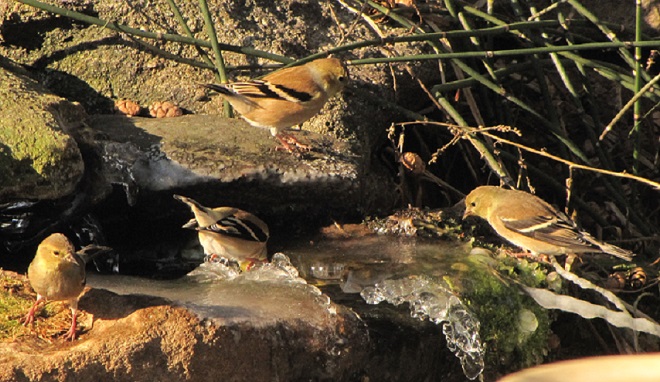
The selections on our list are foods that provide supplemental nutrition and/or energy for indigenous species, mostly songbirds, without sustaining your neighborhood’s non-native European Starlings and House Sparrows, mooching Eastern Gray Squirrels, or flock of ecologically destructive hand-fed waterfowl. We’ve included foods that aren’t necessarily the cheapest but are instead those that are the best value when offered properly.
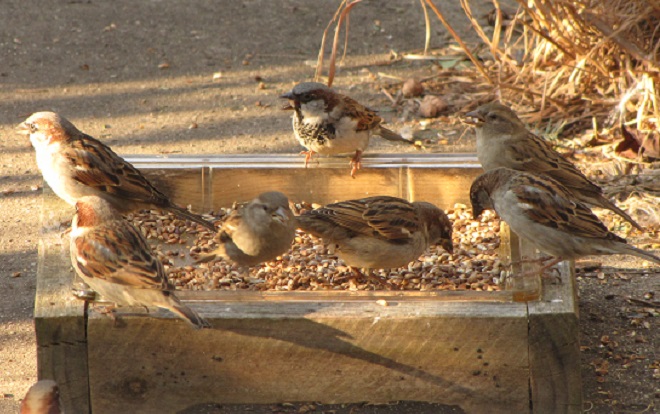
Number 5
Raw Beef Suet
In addition to rendered beef suet, manufactured suet cakes usually contain seeds, cracked corn, peanuts, and other ingredients that attract European Starlings, House Sparrows, and squirrels to the feeder, often excluding woodpeckers and other native species from the fare. Instead, we provide raw beef suet.
Because it is unrendered and can turn rancid, raw beef suet is strictly a food to be offered in cold weather. It is a favorite of woodpeckers, nuthatches, and many other species. Ask for it at your local meat counter, where it is generally inexpensive.
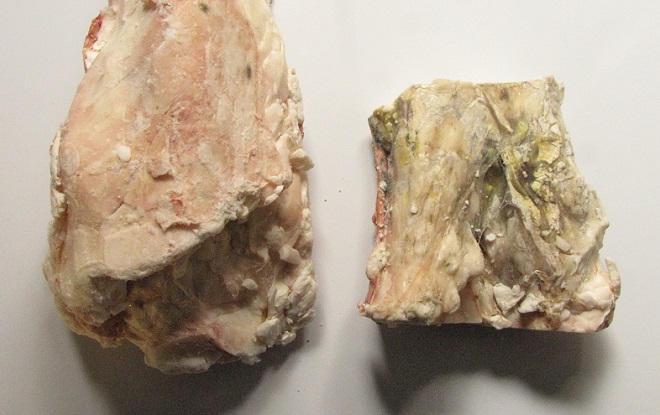
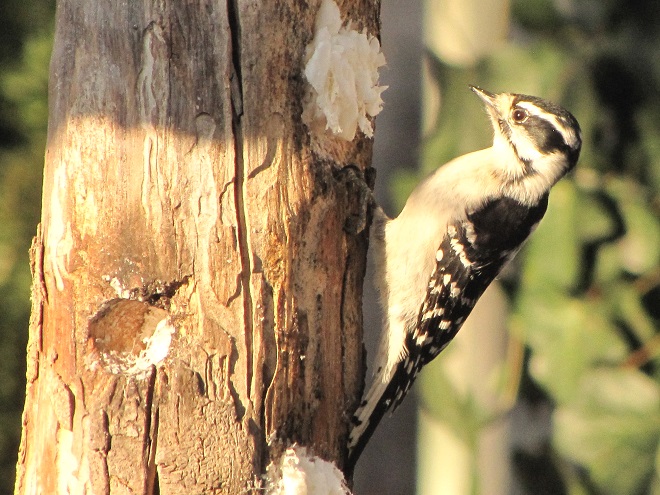
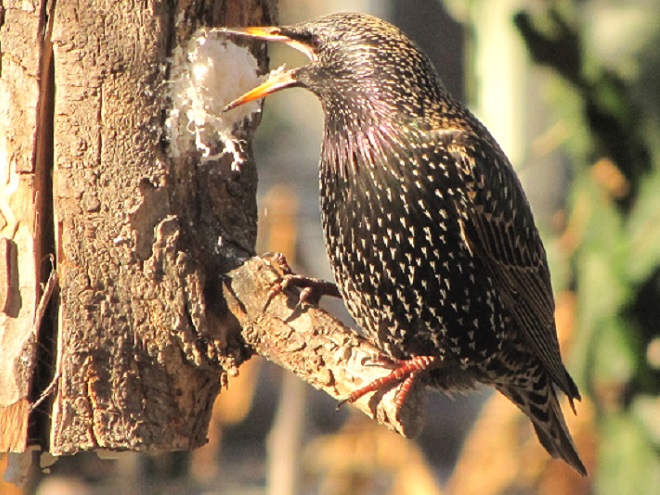
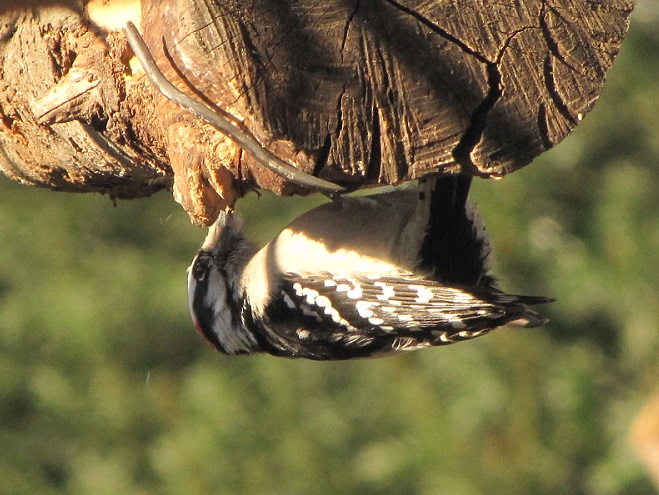
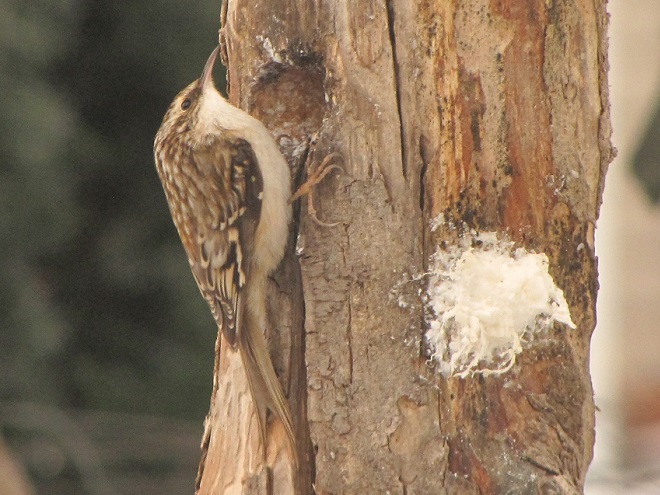
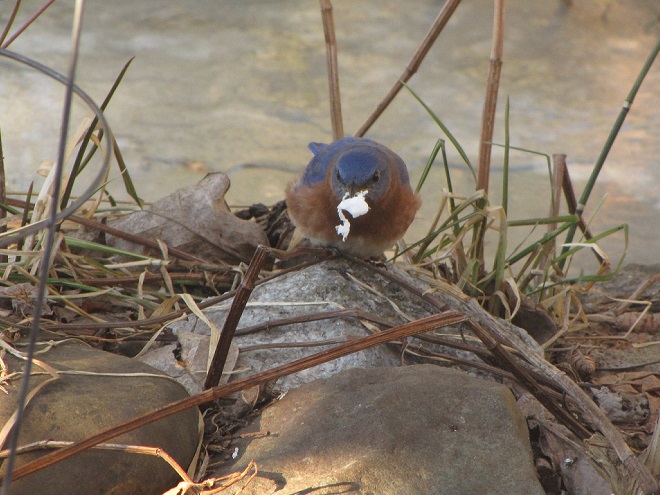
Number 4
Niger (“Thistle”) Seed
Niger seed, also known as nyjer or nyger, is derived from the sunflower-like plant Guizotia abyssinica, a native of Ethiopia. By the pound, niger seed is usually the most expensive of the bird seeds regularly sold in retail outlets. Nevertheless, it is a good value when offered in a tube or wire mesh feeder that prevents House Sparrows and other species from quickly “shoveling” it to the ground. European starlings and squirrels don’t bother with niger seed at all.
Niger seed must be kept dry. Mold will quickly make niger seed inedible if it gets wet, so avoid using “thistle socks” as feeders. A dome or other protective covering above a tube or wire mesh feeder reduces the frequency with which feeders must be cleaned and moist seed discarded. Remember, keep it fresh and keep it dry!
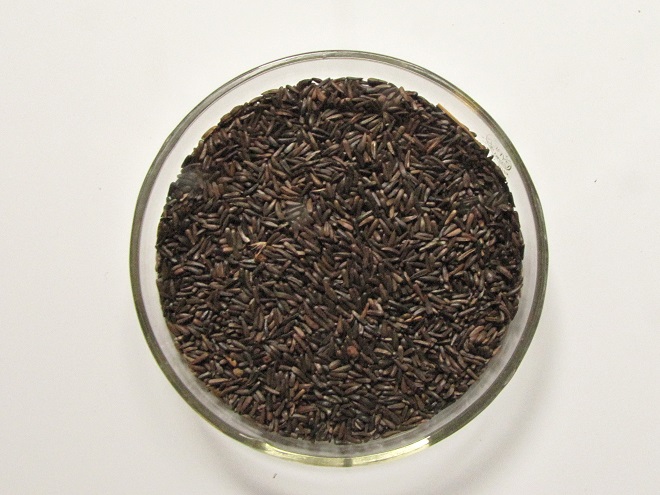
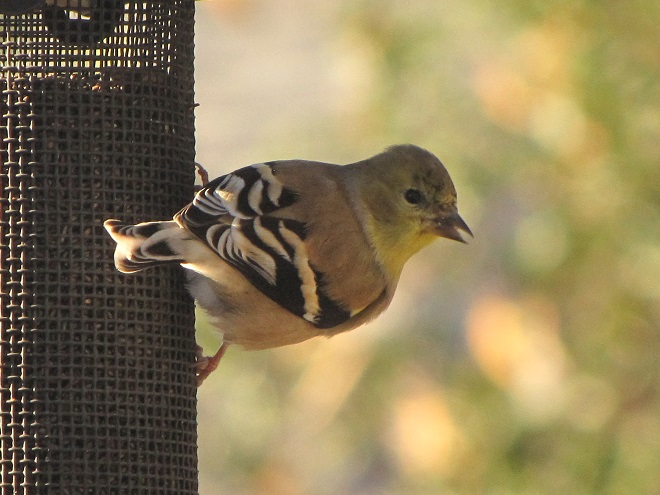
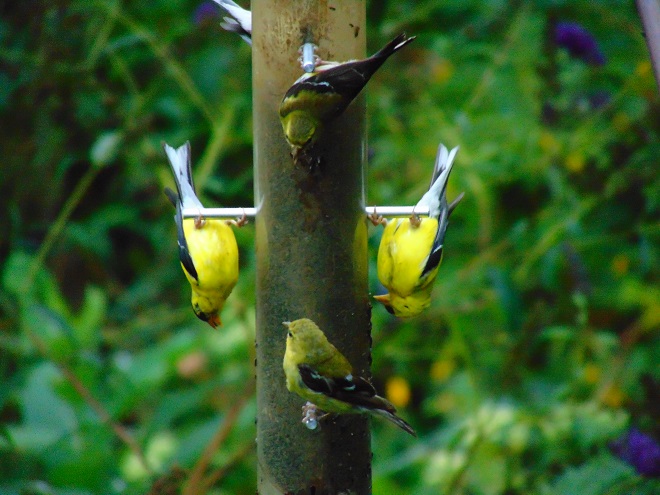
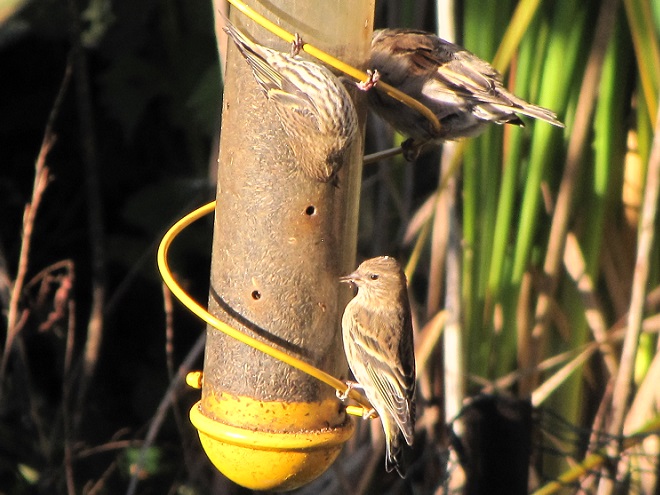
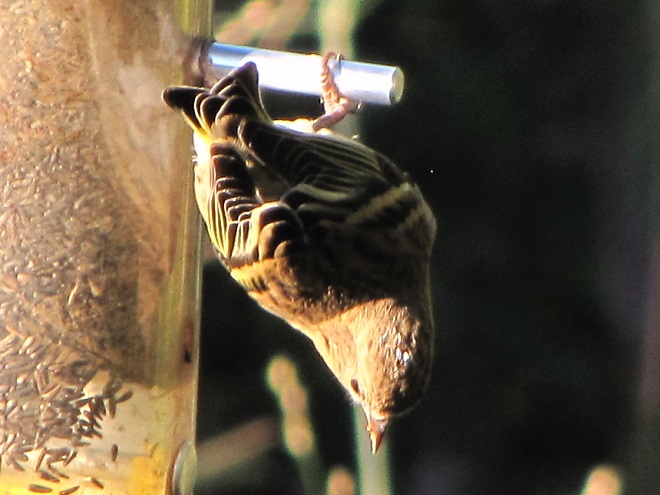
Number 3
Striped Sunflower Seed
Striped sunflower seed, also known as grey-striped sunflower seed, is harvested from a cultivar of the Common Sunflower (Helianthus annuus), the same tall garden plant with a massive bloom that you grew as a kid. The Common Sunflower is indigenous to areas west of the Mississippi River and its seeds are readily eaten by many native species of birds including jays, finches, and grosbeaks. The husks are harder to crack than those of black oil sunflower seed, so House Sparrows consume less, particularly when it is offered in a feeder that prevents “shoveling”. For obvious reasons, a squirrel-proof or squirrel-resistant feeder should be used for striped sunflower seed.
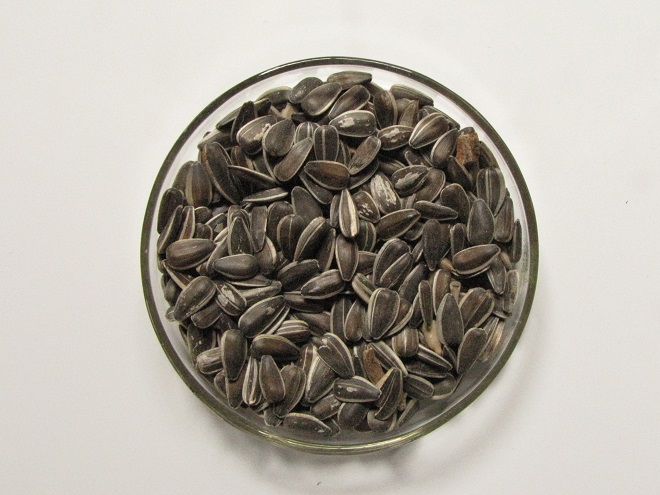
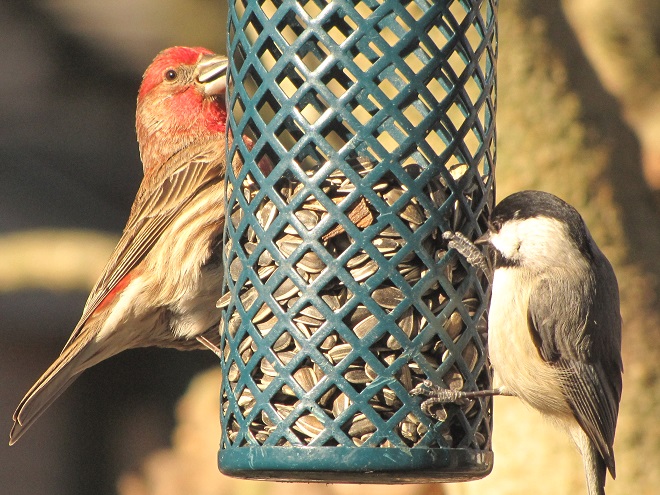
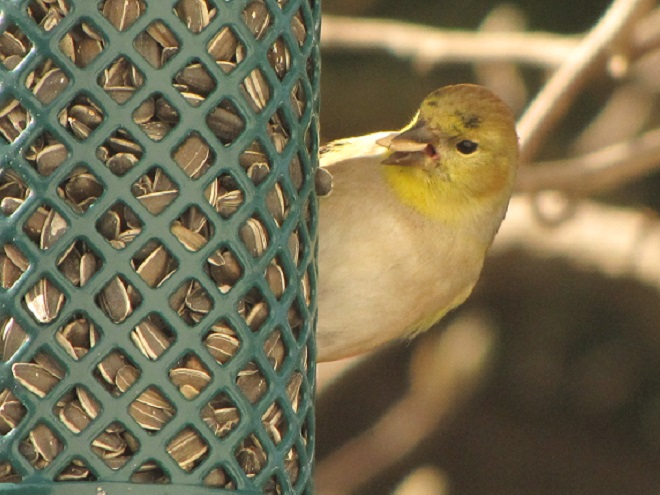
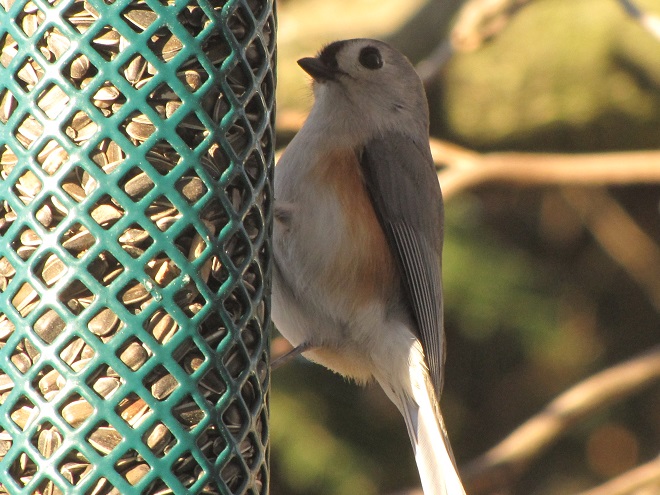
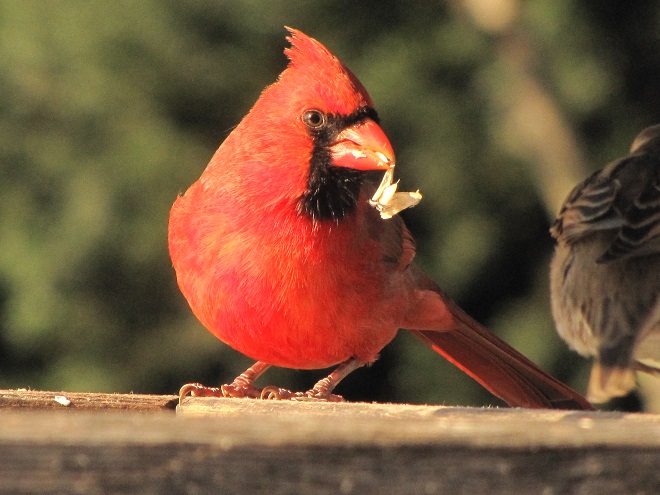
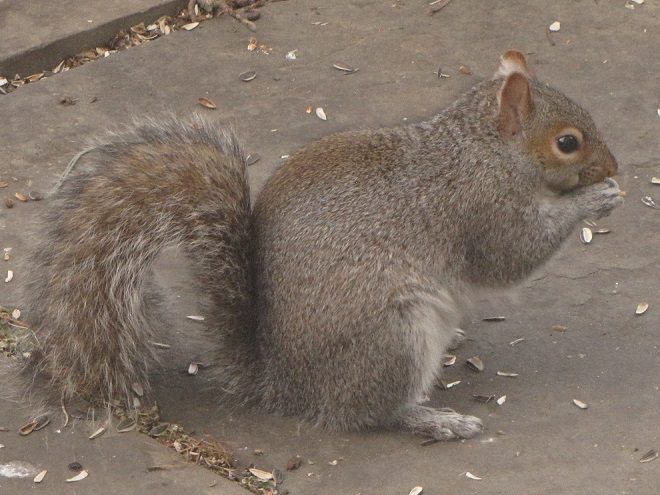
Number 2
Mealworms
Mealworms are the commercially produced larvae of the beetle Tenebrio molitor. Dried or live mealworms are a marvelous supplement to the diets of numerous birds that might not otherwise visit your garden. Woodpeckers, titmice, wrens, mockingbirds, warblers, and bluebirds are among the species savoring protein-rich mealworms. The trick is to offer them without European Starlings noticing or having access to them because European Starlings you see, go crazy over a meal of mealworms.
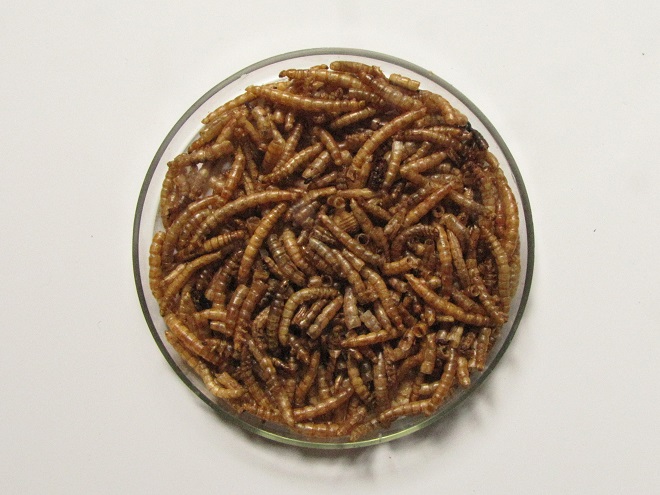
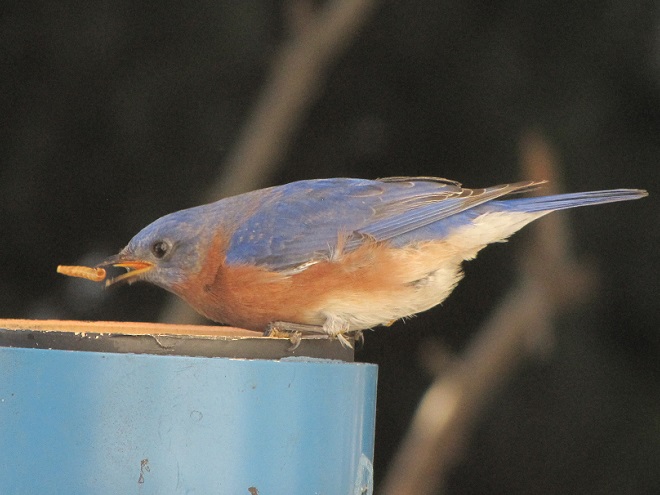
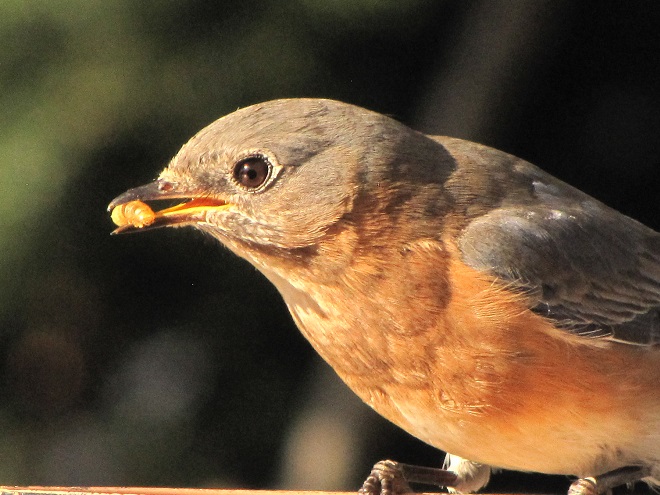
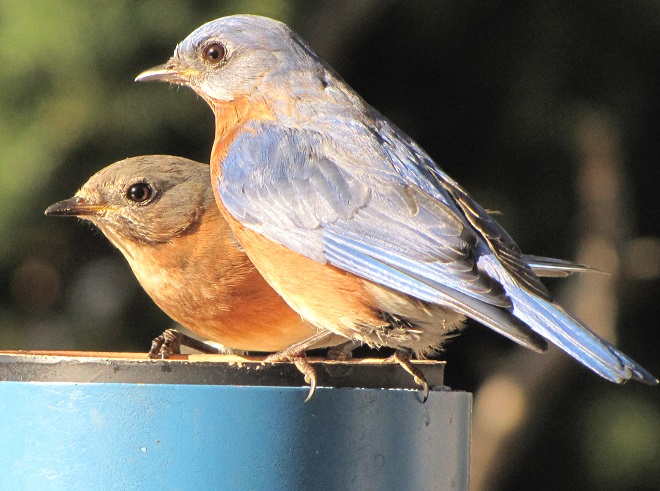
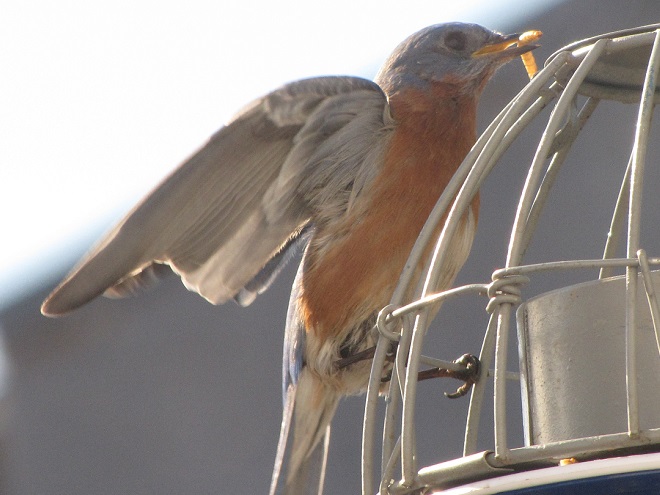
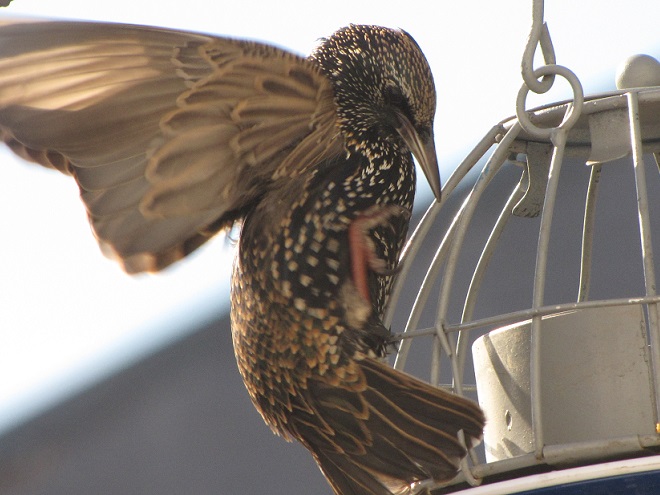
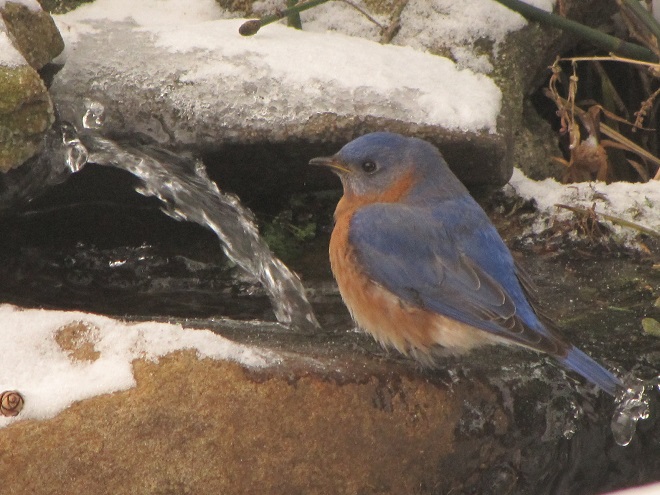
Number 1
Food-producing Native Shrubs and Trees
The best value for feeding birds and other wildlife in your garden is to plant food-producing native plants, particularly shrubs and trees. After an initial investment, they can provide food, cover, and roosting sites year after year. In addition, you’ll have a more complete food chain on a property populated by native plants and all the associated life forms they support (insects, spiders, etc.).
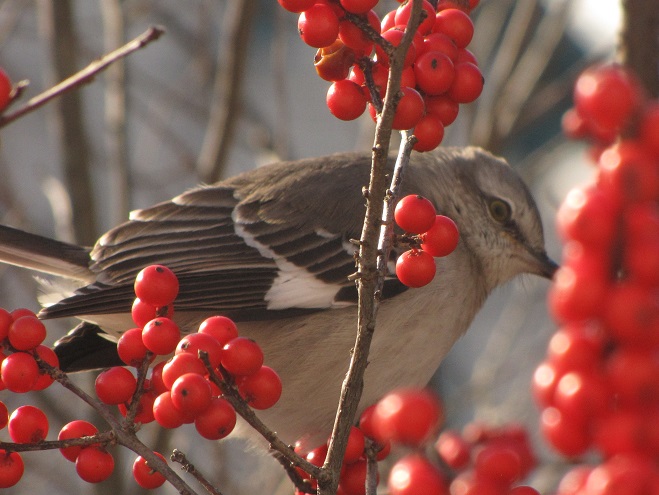
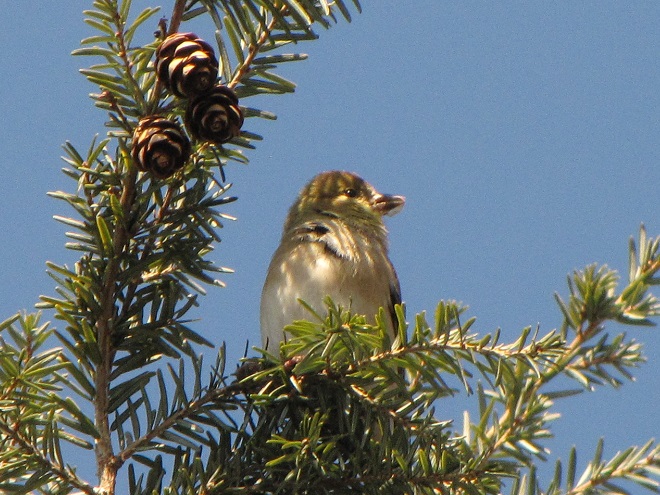
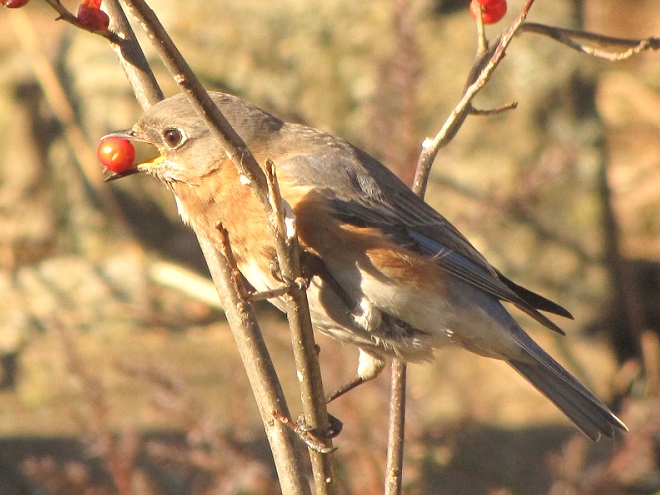
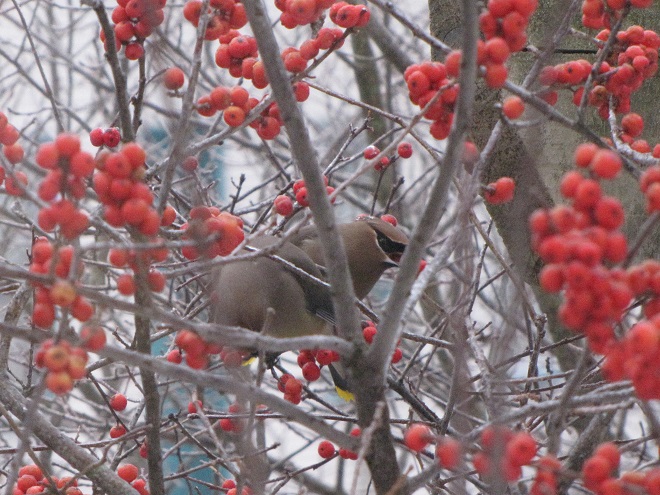
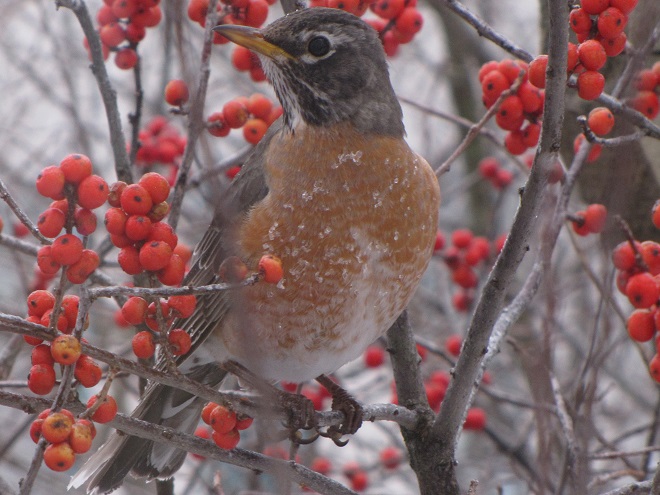
Your local County Conservation District is having its annual spring tree sale soon. They have a wide selection to choose from each year and the plants are inexpensive. They offer everything from evergreens and oaks to grasses and flowers. You can afford to scrap the lawn and revegetate your whole property at these prices—no kidding, we did it. You need to preorder for pickup in the spring. To order, check their websites now or give them a call. These food-producing native shrubs and trees are by far the best bird feeding value that you’re likely to find, so don’t let this year’s sales pass you by!
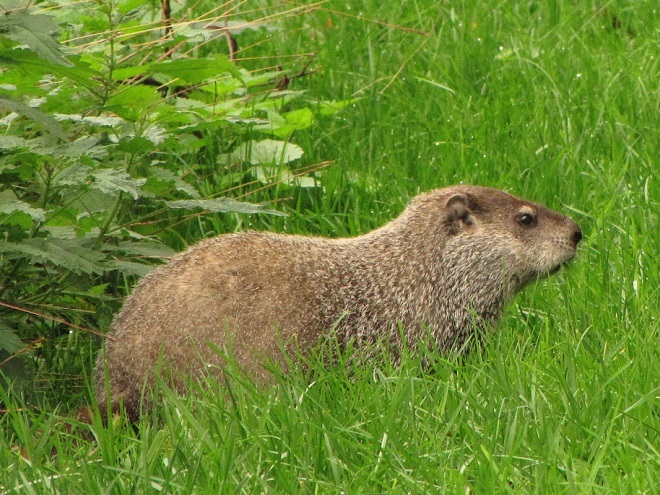
If you visit the shores of the Susquehanna River during the warmer months of the year, there’s a pretty good probability that you’ll be taking a visitor along home with you. Not to worry, it won’t raid the icebox or change the television channels when you leave the room to get a snack. It won’t put you in the doghouse with the landlord for having a forbidden pet. As a matter of fact, you may not even notice your new companion. Sure enough though, it’s there, crawling through the luxurious warm fabric of your clothing and seeking out a good place to dig in and chow down. O.K., so now you’re worried.
Ticks, particularly the American Dog Tick (Dermacentor variabilis), are widespread in the Lower Susquehanna River Watershed. Like spiders, they are arachnids. They have a four-stage life cycle (egg-larva-nymph-adult) which, in the case of D. variabilis, requires a minimum of two months to complete. Females lay up to 6,500 eggs on the ground. Then the fun begins as the larvae with any hope of survival must attach to a small mammal to feed. They can survive for almost a year before finding a host. After a successful hookup and subsequent blood feast of up to two weeks duration, the larva drops to the ground, molts into a nymph, and finds another small mammal, usually a bit bigger this time, to feed upon. A nymph can survive for up to six months before needing to feed. Finding the second host, the nymph feeds for 3 to 10 days, then drops to the ground to molt into an adult. Adult American Dog Ticks can endure up to two years without feeding on a host. The adults mate and feed on larger mammals such as deer and domestic animals including, of course, dogs. After a blood meal of five days to two weeks duration, the adult female tick drops to the ground to lay eggs and initiate a new generation.
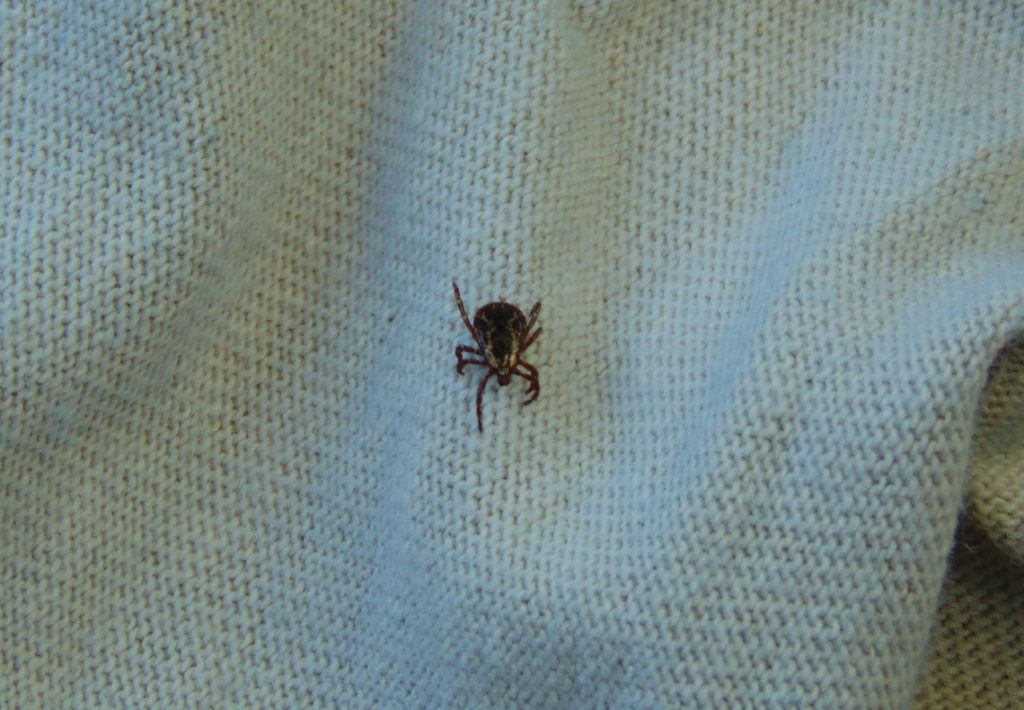
The American Dog Tick is renowned as a carrier of the Rocky Mountain Spotted Fever bacteria (Rickettsia rickettsii). The bacteria is vectored by the ticks from rodents to dogs and humans. The adult tick must be attached to the victim for a minimum of six to eight hours to transmit the pathogen. A rash spreading from the wrists and the ankles to other portions of the body begins two to fourteen days after infection.
Tularemia, caused by the bacteria Francisella tularensis, can be passed by the American Dog Tick. Symptoms can appear in three to twenty-one days and include chills, fever, and inflammation of the lymph nodes.
American Dog Ticks which attach to dogs, particularly near the neck, and are left in place to feed and engorge themselves for longer than five days can cause Canine Tick Paralysis. Symptoms usually begin to subside only after a recovery period following removal of the arachnid.
The American Dog Tick is exposed to Borrelia burgdorferi, the bacteria responsible for Lyme Disease, however, transmittal of this pathogen is by the smaller Deer Tick (Ixodes scapularis), also known as the Black-legged Tick. The Deer Tick is not presently common at Conewago Falls. In the adjacent uplands, it is widespread and is carrying Lyme Disease where the White-tailed Deity (Odocoileus virginianus), the preferred host for the ticks, is found along with mice and other small rodents, the source of B. burgdorferi bacteria. The Deer Tick easily escapes notice and cases of Lyme Disease are frequent, so vigilance is necessary.
SOURCES
Chan, Wai-Han, and Kaufman, Phillip. 2008. American Dog Tick. University of Florida Featured Creatures website entnemdept.ufl.edu/creatures/urban/medical/american_dog_tick.htm as accessed July 30, 2017.